







Introducing this year’s Five Under 40 and Rising Stars. Selected by our judges, they have a foothold locally and aspirations for the future. I’ve been asked why under 40? Is there a particular age that indicates that you are here to make a difference in your industry and in the community that you serve? Reaching the age of 40 is a milestone and many are well-placed in their field of work and have endeavored to lend their leadership skills in some shape or form in their home and community. We’re excited to showcase these leaders and share their stories, and we look forward to celebrating them at a reception later this fall.
Emerging leaders shine at a young age, and it’s never too early to foster those that are destined to lead and to develop a culture of making a difference in the lives of others. Brookstone School defines this as a philosophy, and it is one of their grounding principles. From students, faculty to school families the opportunity to develop selfawareness begins in preschool and beyond.
Turning to those that have led before us, we reflect on the life of former President Jimmy Carter. Weeks from his centennial celebrations, he is exemplary in serving others way beyond the end of his presidential years. Now in times of divisiveness with the run up to this year’s election, it’s reassuring to read about the life of this great Georgian.
We have focused on those in our Hometown Business section that are making an impact in the financial, medical and real estate industries and that are expanding their field of opportunity to serve.
Local and regional—what if we change the narrative and talk national and global? It is not a stretch by any means. We already have a diverse industry that has an international outreach, but we want more and why not? From mill town to thriving metropolis—we’re ready for expansion and we’re a prime location for attracting the next semiconductor industry. We have made great strides, and to be the next Silicon Valley is no pipe dream. The industrial evolution is coming, and the benefits will feel like riding the Chattahoochee whitewater—industry style.
Fall events are in abundance and bring cooler temperatures. There’s bound to be something for everyone in our What’s Happening section. The Tibetan Buddhist monks return to RiverCenter’s lobby for a week in September to create a sacred sand mandala. An event aptly timed for those looking to reflect peace and harmony in turbulent times. Leaders across the age spectrum, businesses and industry bringing exponential growth, local and global. This is where we live!

Jodi Saunders Editor & Publisher
— Established 1991 —
EDITOR/PUBLISHER
Jodi Saunders
jodi@columbusandthevalley.com
ADVERTISING SALES
Becky Kenimer becky@columbusandthevalley.com
Margie Richardson margie@columbusandthevalley.com
Julie Jernigan, Sales Assistant salesassistant@columbusandthevalley.com
Sixty Two Graphic Studio
Brad Barnes
Brett Buckner
Pat Daniel
Doug Gillett
Scott Phillips
Alap Shah
PHOTOGRAPHY
Ritchie White Photography
______________________
P.O. Box 229 214A 10th Street Columbus, GA 31902
706-324-6214 • fax 706-324-6216
COLUMBUS AND THE VALLEY MAGAZINE is owned by Jodi and Gerald Saunders and is published monthly by Valley Life Ventures, LLC, dba COLUMBUS AND THE VALLEY MAGAZINE, P. O. Box 229, Columbus, GA 31902. The cover and contents are fully protected and may not be reproduced in whole or in part without the written consent of COLUMBUS AND THE VALLEY MAGAZINE. We are not responsible for loss of unsolicited inquiries, manuscripts, photographs, or other materials. They will not be returned unless accompanied by return postage Editorial contributions and letters should be addressed to COLUMBUS AND THE VALLEY MAGAZINE, Post Office Box 229, Columbus, GA 31902. Copyright © 2024 by Valley Life Ventures, LLC trading as COLUMBUS AND THE VALLEY MAGAZINE. Postmaster: Please send address corrections to: Post Office Box 229, Columbus, GA 31902.



9 Five Under 40
This year’s honorees lead in the workplace and the community
20 Rising Stars One’s to watch! Notable nominees in leadership roles 27 Leading Industry
A coaltion working together to bring semiconductor manufacturing to our region
35 TEDx Bibb City The event. The speakers. How you can participate.
37 Leading the Way in Leadership Training Brookstone School is fostering the leaders of the future.
45 Hometown Business
Local entrepreneurs bring unique business perspectives.
This years’ Five Under 40 honorees, (L-R) Hayley Tillery, Ryne Stokes, Megan Kelley, Stefan Lawrence and Ashley Williams at The Bo Bartlett Center in Uptown Columbus. by
Ritchie White Photography
53 Tibetan Buddhist Monks Return to Create Mandala RiverCenter brings the opportunity to witness a sacred ceremony
62 Jimmy Carter at 100
Celebrating the former president’s century of leading by example

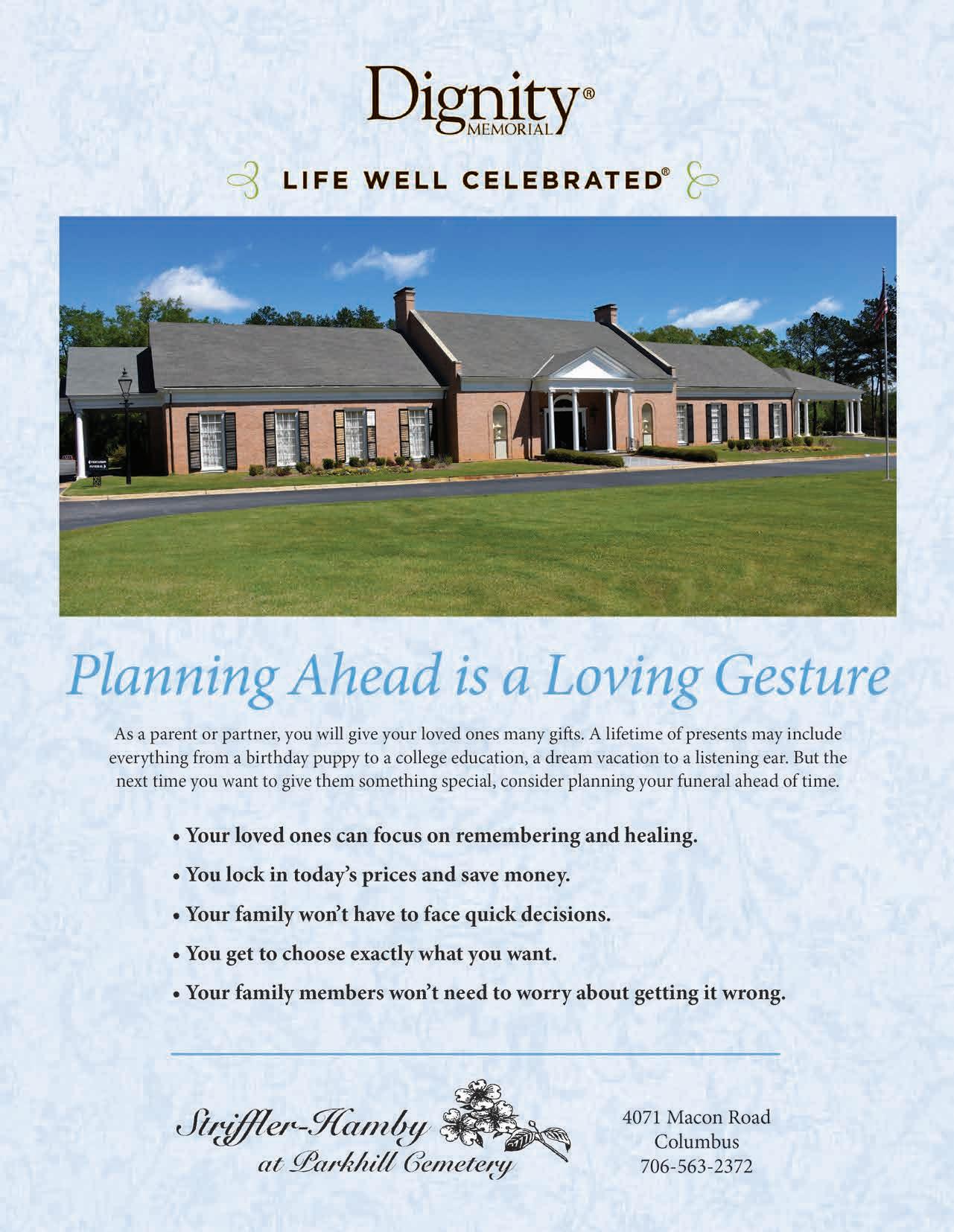
Now-October
Wild things live amidst the plants at the Columbus Botanical Garden. Twelve larger than life animal topiaries will be roaring and soaring among us from now to October. Beautiful arrays of moss, flowers and foliage all combine to create these magnificent creatures. Explore the various gardens to visit all the animals across the garden.
September 1-28
My Southside 1977-92: Photographs by Kenny Gray will be on view at The Do Good Fund Gallery. Local photographer Kenny Gray served as Director of the Columbus State University Rankin Photography Center from 2011-2022. His fine art photography has been widely exhibited. My Southside is an exhibition of Kenny Gray’s work from 1977-1992 while living in South Columbus.
September 1-21
The CSU Department of Art Faculty Exhibition returns, showcasing their diverse collection of works. The exhibition will be displayed across both the Bo Bartlett Center galleries and the Department of Art’s Illges Gallery. Visitors can expect to see a wide range of artistic mediums, including printmaking, ceramics, photography, sculpture, installation art, animation, painting and mixed media pieces. Both galleries are located in the Corn Center.
September 7
Visit the National Infantry Museum’s Global War on Terrorism Memorial Rededication. The National Infantry Museum Foundation will honor the Service Members they have lost in the Global War on Terrorism from 9 a.m. to 10 a.m. This year they will rededicate the memorial and the 10 new names that have been added to the memorial. This event is open to the public.
September 7
Bring your kids to the Teddy Bear Clinic from 10 a.m. to noon at the Piedmont Columbus Regional Midtown Conference Center. Children and their stuffed animal of choice will visit various stations to learn about the future Bill and Olivia Amos Children’s Hospital to help take some of the fear out of a hospital visit should they ever have to be hospitalized. Checkups include X-rays, casting clinic, vaccinations and more. There will also be interactive activities on first aid and safety, ambulance and firetruck
tours, the D.A.R.E Monster Truck and face painting at the free event.
September 8-14
Tibetan Buddhist monks from Drepung Loseling Monastery will spend six days constructing a Mandala Sand Painting at RiverCenter open for the public to watch from 10 a.m. to 5:30 p.m. each day. From all the artistic traditions of Tantric Buddhism, that of painting with colored sand ranks as one of the most unique and exquisite. Millions of grains of sand are painstakingly laid into place on a flat platform to form the image of a mandala. To date the monks have created mandala sand paintings in more than 100 museums, art centers and colleges and universities in the world.
September 12
Lend a hand at The Columbus Museum’s Volunteer Workday in their historic Bradley Olmsted Garden the second Thursday of every month from 8 a.m. to Noon. Join in anytime during the morning. All necessary tools will be provided by the Museum, and they will have water and snacks available. If you can join them for a lovely day working in the garden, they would greatly appreciate the assistance.
September 13
Come make glass pumpkins at The Columbus Museum. Have you always wanted to learn about glassmaking? Then this is the class for you! After learning about glass safety and watching a short demonstration, participants will get to try their hand at making their own glass pumpkin. All materials are included and no experience is necessary. Advanced registration is required.
September 13
Experience an elevated safari-themed evening at Gala in the Garden hosted amidst the lush animal topiaries at Columbus Botanical Garden. Come out from 7-10 p.m. and enjoy gourmet cuisine crafted by Epic Restaurant and live music performed by the talented Tanner Fussell (from “The Voice”). We will also have complimentary bar service offering a selection of fine wines, spirits, and cocktails. Get your tickets now for a night of gourmet delights, captivating music, animal topiaries, and delightful camaraderie in the heart of nature’s beauty. 21+ only
September 14-November 2
Have you heard? The glow is growing in the gardens during bigger and brighter Pumpkins at Callaway! Weekends through November 2, discover a wonderland of gigantic pumpkins growing and growing! See hundreds of jack-o-lanterns light up the night with a new immersive photo op,
paired with the family favorite walk-through experience, the Enchanted Pumpkin Forest featuring Foggy Hollow. By day, discover the Garden of Giants featuring some of Georgia’s biggest pumpkins, find your way through family-favorite Cason’s Corn Maze, and relax with fallinspired refreshments in Cason’s Beer & Wine Garden.
Grammy-Award winning ensemble Time For Three makes their Columbus Symphony Orchestra debut performing Kevin Puts’ haunting piece Contact—a unique work written especially for this charismatic trio. Comprised of Charles Yang, Nicolas Kendall and Ranaan Meyer, Time For Three pushes creative boundaries and captivates audiences worldwide with their exceptional talent as they explore music across multiple genres. The utterly romantic and supremely lyrical Rachmaninoff Second Symphony completes the evening.
19
CSU’s Schwob School of Music presents Schwob Wind Ensemble Concert at the Riverpark Campus Legacy Hall located in the RiverCenter for the Performing Arts. The concert will be held at 7:30 p.m. and is free to the public.
19-29
The Springer Opera House presents Jersey Boys The Story Of Frankie Valli & The Four Seasons. Four average Jersey boys are “discovered” while harmonizing under a streetlamp. When they sang, everything dropped away and there was only the music. Jersey Boys is the story of those ordinary guys who make extraordinary musical history. Frankie, Bob, Tommy and Nick—or as they came to be known, Frankie Valli & The Four Seasons—share memories fueled by youth then tempered by age. Told from the perspective of each member, the play dives into the highs and lows of their turbulent rise to stardom, the cost of fame and the bonds of friendship.
The Columbus Civic Center will host the Tri-City Latino Festival, an extraordinary celebration of Latin American culture and heritage nestled in the heart of Columbus. It is one of the largest Latino festivals in the Southeast, organized and hosted by 8 highly involved members of the Tri-City Latino Association This annual gathering stands as a radiant beacon of cultural pride, unity and community engagement.
September 22
Wheel of Fortune LIVE! - America’s Game® comes to the RiverCenter. Contestants are randomly selected from the audience to join the host onstage and spin a replica of the iconic Wheel, solve puzzles and WIN incredible prizes like trips to Paris and Hawaii or BIG MONEY up to $10,000 in cash. Audience members can join in on the fun with interactive games and puzzles! You won’t want to miss this thrilling live experience!
September 21-22, 28-29 & October 5-6
Fields of Grace Dahlia Fest will be held at Fields of Grace Flower Farm. The farm has three beautiful fields of dahlias and three acres of sunflowers. Artisan vendors, food trucks, games, live music and fun activities.
September 28
From 1-4 p.m. the Rankin Courtyard will be transformed into a beer and wine garden for Uptown’s Beer and Wine Festival. This annual event boasts live music, food from local vendors, and of course, a chance to sample beer and wine from across the world. The money raised by this ticketed event helps to underwrite many of Uptown’s free events throughout the year. 21+ only
October 1
Join the Piedmont Columbus Regional Foundation and Radiology Partners Georgia at the Columbus Convention and Trade Center for the 24th annual Breast Cancer Awareness Luncheon as they raise funds for the Piedmont Breast Care Center. Doors will open at 10:30 a.m. so guests can enjoy the annual Pink Partner Expo. The tradition of entertaining will continue at 11:30 a.m. with lunch, a keynote address and an inspiring story of hope from a featured breast cancer survivor. To review sponsorship opportunities or to reserve a Luncheon table, please contact Rachel Dye at 706.660.6559 or rachel.dye@piedmont.org.
October 3
The Columbus Museum presents an Artist Talk with Monica Ikegwu from 6-8 p.m.
October 4
CSU’s Schwob School of Music presents Schwob Philharmonic Concert. This free event will be held at the Riverpark Campus Legacy Hall located at RiverCenter.
October 4-12
CSU’s Department of Theatre and Dance present Macbeth by William Shakespeare at the Riverside Theatre.
October 5
The Tuskegee vs. Morehouse Football Classic returns to Columbus! Since 2019, fans have eagerly awaited the comeback of this historic event, and the wait is finally over. Join us on at A.J. McClung Memorial Stadium for a thrilling showdown that promises to be unforgettable.
October 12
Spend a romantic evening with Australian pop/rock duo Air Supply as they bring “The Lost in Love Experience” to RiverCenter this October. The duo, comprised of Graham Russell and Russell Hitchcock, met in 1975 at rehearsals for Jesus Christ Superstar in Sydney, Australia. The pair became instant friends with their shared love for The Beatles and, of course, singing.
October 10
Uptown Columbus will host the 2024 RushSouth Music and Outdoor Festival featuring Tower of Power and Junior Brown. This is a place where nature and music collide. It’s a place where a great blue heron flies overhead while music plays in the background. Your bare feet dance where a riverbank meets a historic cityscape. You sip on craft brews and seltzers. You’re listening to music deeply rooted in the land your feet dance upon— the deep south.
October 12
The Columbus Convention & Trade Center will host “Hero” for a Day from 10 a.m. to noon. Your heroes will experience a marvelous morning! From meeting one of their favorite superheroes, enjoying actionpacked activities, interacting with real-life heroes from our emergency services, military and much more! Encourage your little one(s) to dress up as their favorite hero. Tickets must be purchased in advance.
October 17
Linwood Ramble is a celebration of history, heritage, and the enduring stories that connect us all. Join us for food, drinks and live music while you mingle and hear stories of the people who have made Linwood Cemetery a cherished landmark.
October 19
Come celebrate the grand re-opening of the new South Columbus Public Library! An unforgettable day of free family
fun for the entire community. Enjoy tours, crafts, storytelling, food, entertainment, character appearances by Bluey & Bingo.
October 19
Trace Adkins makes a stop at the RiverCenter. In his 25-year career in country music, Trace Adkins has sold over 11 million albums, charted over 20 singles, earned numerous awards and GRAMMY nominations and garnered over two billion streams. A Grand Ole Opry member for nearly two decades, the Louisiana native is known for dynamic baritone and fiery, always-memorable live performances, and has expanded his Country career to include film and TV acting. He broke out in 1996 with the debut album, Dreamin’ Out Loud, cracking the Top 5 of Billboard’s Hot Country Songs chart with Every Light In the House Is On and following with the #1 smash, This Ain’t (No Thinkin’ Thing)
October 19
Join the Columbus Symphony Orchestra for Joy of the Italian Baroque. Nothing lifts spirits like the music of the Italian Baroque! Enjoy a delightful evening featuring the sunny works of Italian masters Corelli, Vivaldi, Albinoni and more—all within the intimacy of beautiful Legacy Hall. Sip a glass of prosecco and taste classic Italian desserts at this light, airy concert perfectly paired with a reception during an extended intermission.
October 19-February 2, 2025
The Columbus Museum will exhibit Reckonings and Reconstructions: Southern Photography from The Do Good Fund. An opening reception for the exhibit will be held on October 18 from 5-7:30 p.m.
October 26
Let the Ghoul Times Roll—Trunk or Treat Style. River Oak Boutique is hosting a trunk or treat from 11a.m. to 4 p.m. on First Avenue between 12th & 13th Street. Set up is free for participating businesses just provide candy or goodies for participants. To register your business, complete the registration.
October 27
Bring your little ghosts and goblins to The BOOtanical Garden - Not so Scary Halloween to haunt the Columbus Botanical Garden while participating in many fun and educational activities, carnival games and crafts. Upon the completion of each activity, the kids will receive candy! They will also provide fun activities such as scavenger hunts and classic fall festival contests.


BY DOUG GILLETT
INTRO BY JODI SAUNDERS
RITCHIE WHITE
Columbus and the Valley in conjunction with the Columbus Georgia Chamber of Commerce are proud to showcase our 2024 Five Under 40 and Rising Star recipients. We received outstanding nominees and we are highlighting the five that our judges deemed were exemplary in their leadership roles both in their chosen field of work and in their community. We are delighted to feature them and for you to read their stories in their own words. Our Rising Stars are the notable nominees that are recognized as the leaders of the future. Altogether, this group of ten locals are carving the path towards a better future for all of us and they’re making the difference in the lives of many.

AAshley Williams got used to moving around at a young age. An Army brat, she was born in Wiesbaden, Germany; her family moved to Florida when she was young, then to Fort Moore. A year and a half in Hawaii, back to Columbus for high school, then Tennessee for college, then back to Columbus to work at Aflac.
“I started as an executive assistant on the national accounts team,” she recalls. “Learning the business was the foundation of my career here at Aflac. I worked with an amazing group of sales leaders who worked large cases, and they were talking about products, enrollment conditions, everything you could think of—the whole sales cycle from the pitch to the enrollment and the servicing. I got to learn it all, and I soaked it up like a sponge.”
Now settled in Columbus with her husband and two children, Ashley’s been at Aflac for 17 years. But that doesn’t mean she stopped moving around—not at Aflac, anyway. From executive assistant to her current position as chief of staff for the company’s chief marketing officer, Ashley estimates she’s “moved desks probably 20 different times” over the course of her career.
One of her most memorable desks, she says, was on Aflac’s philanthropy team. Diagnosed with Hodgkin’s lymphoma when she was still in grade school, Ashley spent most of her time in Hawaii
undergoing chemotherapy and radiation. So working with the Aflac Cancer and Blood Disorders Center was uniquely rewarding.
“Until that point I’d never been to a children’s hospital. It was amazing to walk through and see patients, families, doctors and nurses all working together,” she remembers. “It was absolutely wonderful.”
That isn’t the only experience she’s gained working with children. A former scholarship softball player at Tennessee Tech, Ashley has racked up a number of years as a volunteer softball coach, first at Harris County High School, then at Calvary Christian School, where her children attend.
“It wasn’t until I graduated and started coaching that I really understood what it meant to be a coach and the commitments of all the coaches I’d had, all that they poured into me, so it’s something I
definitely wanted to give back to,” she says. “Players will come back and say ‘Hey, Coach Ashley’ or ‘Coach Dub’— some of them are graduating college now, and I’m like, ‘Oh my gosh, I’m getting old!’ But it’s just amazing to see.”
This year, for the first time in a while, Ashley has taken a breather from coaching to devote more time to family, but that hardly means she’s put away the cleats entirely. “My daughter’s starting high school, so she’s in the recruiting era. It’s definitely different, being ‘Mom’ versus ‘Coach’ in that regard. But it’s been fun to take a step back and really enjoy that with her.”
And Ashley and her husband still take to the diamond as players themselves. “Every time I go back to the softball field, I’m itching to get back on the dirt,” she says, the joy evident in her voice. “I love it. You start at a young age, and it’s in your DNA.” C

Hometown
Columbus Education
Tennessee Technological University, Columbus State University
Family
Husband Jason, Daughter Kennedy, Son Baylor
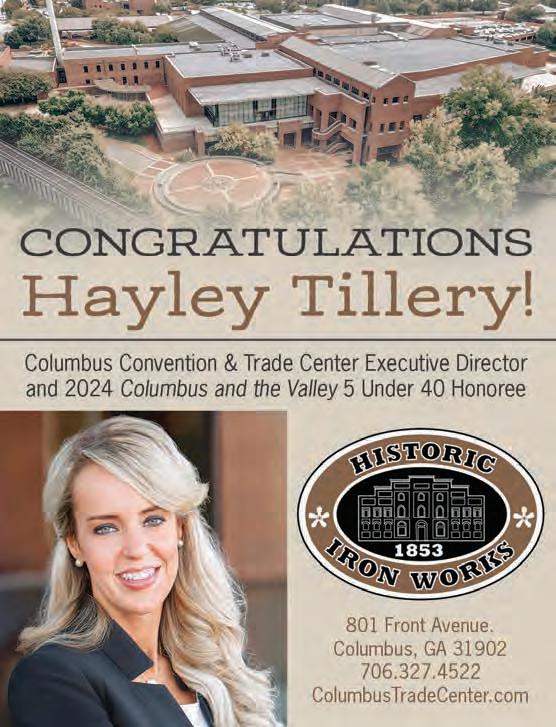

UUsually when you’re sitting across from the school principal, you’re in deep trouble. But for the students at Aaron Cohn Middle School in Midland, it’s more likely to be a reward.
Aaron Cohn Middle is one of 1,400 Georgia schools that has implemented Positive Behavioral Interventions and Supports, an evidence-based framework for reinforcing positive behaviors. Students at Aaron Cohn who exhibit those behaviors earn “PBIS points” they can exchange for special rewards. And more than a few of them have spent their points to have lunch with Dr. Stefan Lawrence, the principal who roams the hallways in a business suit, his trademark Jordan Air Max sneakers and a beaming smile.
“Once children have figured out ‘this person is showing up every day for me,’ they’re much more apt to say, ‘Well, I’m going to show up every day for this person,’” says Stefan of the bonds he tries to forge with his students. “Knowing them by name, things like that just go a really, really long way. I try to know them, know their families.
“They know I went to Georgia, so they’ll ride me if Georgia loses,” adds Stefan, who earned his doctorate in educational leadership at UGA in 2017. “But it’s the same thing if Georgia wins: ‘Hey, Dr. Lawrence, did you see that game?!’ They don’t even watch football like that, they’re watching so they have something to talk
to you about when they see you at school. So that part of it, I’ve tried to be more intentional about creating those bonds between students and myself.”
Even before his promotion from assistant principal last year, Stefan had assembled a stellar career within the Muscogee County School District. In 2016 he was the district’s Teacher of the Year, and he was a finalist for the state award two years later. In between he did a fellowship at the Harvard Graduate School of Education that he describes as “probably the best professional development I could ever think of.”
Yet that decorated career almost didn’t happen: When Stefan started at Columbus State, he was a pharmacy major. But one day, while working with kids at an on-campus basketball camp, he caught the eye of the late James Brewbaker, a longtime faculty member in CSU’s College of Education and Health Professions. Brewbaker suggested Stefan stop by his office sometime.
When he did, Brewbaker told him about the nation’s dearth of black male teachers—
only two percent of the educational workforce at the time—and research that showed black male students were falling behind as a result. “I was just enthralled by the research,” Stefan says. “I changed my major the next day, and outside of getting baptized it’s the best decision I ever made in my life. I’ve not regretted being an educator, not one day. I’ve never had a bad day at work.”
The experience has made Stefan a passionate advocate not only for Aaron Cohn, but for public education in general.
“What we do in public education,” he says, “the boldness to say that every child can learn, every child can be successful—you don’t find that in many places around the globe, especially in a country our size. To take that on, that’s what I mean when I say, ‘That’s America.’ We just need to remember who we are... America has always depended on public school educators as helpmates to improve us, to strive to be this more perfect union that’s mentioned in the Constitution. Public education is how we do it.” C


37
Hometown
Columbus Education
Columbus State University University of Georgia
Family
Parents Kenneth and Marilyn Lawrence, Sister Dr. Chelsea Lawrence, Grandmother Annie Bass

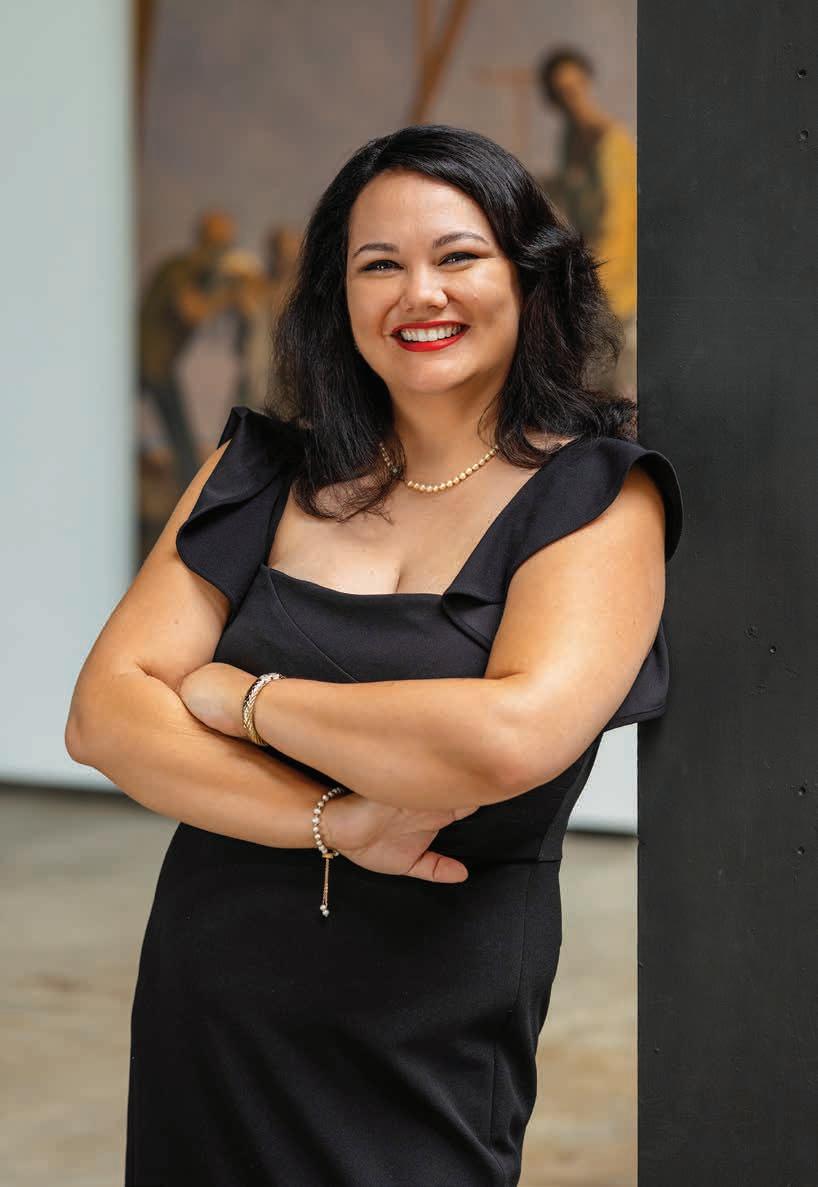
WWith just over a decade of serving as an attorney, Megan Kelley has had a wide variety of experiences—personal injury and family law in Florida; the district attorney’s office in Colorado Springs; immigration prosecutions for the Department of Homeland Security, to name a few.
Now that she’s an assistant district attorney in her hometown of Columbus, she says she’s learned two important things. First, she’s definitely found her calling. “I do love being a prosecutor—l love what I get to do every day,” she says. “I actually just got back from an annual conference of prosecutors, and one of them gave a speech about when he was a young DA. Someone told him the only job you really have as a prosecutor is to do the right thing every day, and I really feel that.”
Second, she’s right where she needs to be. “Columbus is honestly my favorite place I’ve ever lived! It’s such a good Southern vibe here—everybody is so nice and hospitable,” Megan says. “I strongly believe we have the best food in all of the United States; we have really nice people; there’s a lot of things to do here without having to sit in traffic for hours every day. We have the perks of living in a town that is full of big-city amenities but with smalltown charm.”
Megan is actually in her second stint as an ADA in Columbus after returning this
past May. She was first hired a little over seven years ago while working in private practice in Florida. “I wanted to come home, and I wanted to do something that was a little more of a chance to give a voice to victims—I wasn’t feeling as fulfilled in personal injury or the limited family law I got to do,” she remembers. “I heard there was an opening at my hometown district attorney’s office... and our current DA called to offer me the interview on my birthday, December 28, 2016. I was 28 on the 28th. That was a great experience!”
Megan’s dedication to community service doesn’t end when she comes home from the office. She’s a past president of Columbus’ Junior League and its chapter of the University of Georgia Alumni Association, as well as a court-appointed special advocate for abused and neglected
children. She also volunteers with the Paws Humane Society and fosters rescued bull mastiffs; Megan’s current charge is a dog named Major, but she says she’s had as many as five running around her house.
In March 2022, Megan also co-founded a unique local business, APB Dresses. “I noticed we didn’t really have many affordable retailers out here for young women,” she says, “and a lot of kids couldn’t go to their milestone events, proms and things like that. So I recruited my mom to help me found an online retailer that sells specialty event dresses for $100 or less. We often do $20-or-less sales, and we do pop-ups at some of the local churches and rural high schools— we hope to make it brick-and-mortar someday.” C
Hometown
Columbus Education
University of Georgia
Florida Coastal School of Law
Family
Mom Sandra Kelley, Aunt Michelle Lowe, Dog Major



RRyne Stokes can attest to Columbus’ hospitality—and the value of friendship.
A native of the Chattanooga area, Ryne was studying at Dalton State College when he served as a leader at a Christian beach retreat on the Gulf coast. Over those 10 days he connected with a group of fellow youth leaders from Columbus. “I wanted to finish up [college] somewhere else, and thought it would be a good idea to go where I knew at least somebody. And I thought Columbus might be a good fit.”
The friends Ryne met helped him get settled in his new town, where he enrolled at CSU and worked as a bank teller at Columbus Bank and Trust. He remembers a specific coworker with whom he’d share PB&J sandwiches in the break room, peruse the business section of the paper over lunch and talk about career goals. Over the course of those lunches, Ryne’s work pal convinced him to change his major from management to finance.
Unfortunately, finance jobs were scarce when Ryne graduated from CSU in 2008, just as the global financial crisis was paralyzing the economy. But as it turned out, his dreams of a career as a financial advisor weren’t over yet—and neither was his friendship with that colleague.
“That same coworker called me about four years later,” Ryne remembers. “We had kept in contact loosely, and he said, ‘Hey, there’s an opening in our department, and you should apply to be a financial advisor
for Synovus.’” Ryne was initially doubtful he’d get the job, “but I was very fortunate to be offered the opportunity to be a financial advisor for Synovus Securities.”
More than a decade later, Ryne still finds a great deal of satisfaction in his career. “Church ministry has been something I’ve been involved in for many years in various ways, and I honestly view this as a way for ministry outside the church, just being able to help people,” he explains. “We serve people in such an important area of their lives. We get to meet with folks on the mountaintops of getting ready to retire, but also in the valleys of losing someone they love and trying to figure out life and finances after that, and there’s a lot of in-between, too. It’s a very fulfilling role that I have been fortunate to serve in.”
Church remains a big part of Ryne and his family’s lives—he’s one of the musicians for worship services at MidTree Church
in Cataula, while his wife Laura works with the children’s ministry (and their own kids have gotten old enough to help out in the “baby room”). Elsewhere in the community, he’s put his financial skills to use on behalf of the United Way’s annual campaigns.
But the organization that might be closest to his heart is Clement Arts, a nonprofit that supports foster, adoptive and underprivileged families through the arts—everything from concerts and ballet performances to ceramics and photography workshops. Ryne serves on Clement’s board, and Laura teaches dance classes there.
“In the short amount of time it’s been around, it’s come so far,” Ryne says. “So many families have been impacted by the work that they do. It’s an incredible organization that really values the lives of children, especially the most vulnerable among us.” C

Age 39
Hometown
Rossville, GA
Education
Columbus State University Family
Wife Laura, Son Luke, Daughter Nora


CCapital One has Taylor Swift. Papa John’s (among others) has Shaquille O’Neal. If the city of Columbus starts cutting tourism ads, they’re going to want to put Hayley Tillery front and center.
She may not be a household name outside the Chattahoochee Valley, but it’s hard to imagine a better spokesperson. Born and raised in the valley region, she was Miss Columbus in 2014, went on to earn two degrees at Columbus State University, and is currently executive director of the Columbus Convention and Trade Center.
And you don’t have to talk to Hayley for more than a few minutes to know that her enthusiasm for her hometown is genuine. “I take a lot of pride in being from Columbus, and I want everybody to know this is the place,” she says.
Earlier in her career, working for Chickfil-A and TRI Leadership Resources, Hayley would travel around the country for weeks at a time—but as far as she’s concerned, the experience mainly just reinforced Columbus’ uniqueness. “We are so community-driven, and I’m not just trying to throw out a buzzword—truly, this is the most giving community that I have ever witnessed,” she says. “I have traveled to other places, and I don’t see that kind of community pouring out... But [in Columbus], if there was a need—whether a family needed support, or there was an event to support, a scholarship foundation, or the growth and infrastructure for
Columbus to reach its full potential—we’re a community that understands that, and it’s exciting to see what we can do with that kind of vision in mind.”
Not that her current position was something she planned. Planning marketing events for Chick-fil-A, Hayley had become a rising star in the company and was even on a path to becoming a store operator herself. But when the position of assistant director of the Trade Center opened eight years ago, Hayley recalled something she learned from Chick-fil-A founder Truett Cathy himself—“Always embrace unexpected opportunities.”
“It would allow me to plan events, which I love,” she says, “and kind of take all my different worlds that I’ve been a part of—nonprofits, food and beverage, and tourism—and do it in the home that I love. As scary as the thought of leaving Chickfil-A and TRI Leadership was, I knew from traveling all over the nation that Columbus was unique. I actually valued it more than I

ever had before, and I decided to embrace an unexpected opportunity!”
Hayley seems incapable of turning down any great opportunity. In addition to pursuing a PhD from Auburn’s hospitality management program and helping to get the downtown campus of Cascade Hills Church off the ground, she’s involved in a whirlwind of community and philanthropic organizations, from Uptown Columbus and the Rotary Club to Children’s Miracle Network, Teen Advisors and Easterseals West Georgia. In August, she even played Cinderella at Easterseals’ “Princess for a Day” event for children with disabilities.
As glamorous as it might be to be a Disney princess, though, for Hayley it’s all about giving back to the city she says has given her so much. “I love Columbus. I love my home,” she says. “Most importantly, there are so many people who got me to where I’m at today . . . people who believed in me. So now, if I can be that for others, that’s my number-one priority.” C
Hometown Columbus Education
Columbus State University
Auburn University
Family
Husband Rusty, Dog Rivie Cola


Program Manager, Columbus Georgia Chamber of Commerce
Education
Columbus State University
Family
Husband Josh, Dog Mr. Feeny
“As the program manager at the chamber, I lead LeadershipColumbus,YoungProfessionalsand PartnersinEducation.Myroleallowsmetodevelop andsupportemergingleaderstodrivecommunity improvement.IchosethiscareerbecauseI’m passionateaboutenhancingourcommunityand enjoy working with diverse individuals to address localneedsandcreatepositivechange.”

Payroll Accountant, Chattahoochee Valley Community College
Education
Columbus State University, Troy University
Family
Parents Jimmy and Janice James, Brother LaCorey Pearson

“As an accountant in the business office at CVCC, I managearangeoffinancialresponsibilities.These includepreparingtheannualpayrollcalendar,helping facilitateemployeeorientations,managingpayrollsand vendorpaymentsandoverseeingtaxforms.Mywork allowsmetocombinemypassionfornumberswiththe opportunitytohelpothers.Thisbalanceofprecision and service is what drew me to the accounting field.”
“FountainCityCoffeehasgivenmean opportunitytobemyselfandgrowalongside theuptown/downtowndistrict.Ithasalways beenanimportantplaceinmyheart,and spreadingthatlovethroughthecommunity withhighqualitycupsofjoeseemslikethe perfectjobtome.” Jud
Co-Owner & Head Roaster, Fountain City Coffee and FCC@Banks
Education Brookstone School
Family
Wife Edna, Dogs Hattie, Clementine and Kitty Cats Martini and Gimlet

Assistant Director, Undergraduate Programs Columbus State University
Owner/CEO, eaRN It Academy
Education University of West Georgia, Walden University, Georgia State University
Family
Husband Erich, Daughter Eryn, Son Jayden

Allen Whitley 37
Financial Advisor/ VP – Investments, Synovus Securities, Inc.
Education
Georgia Southern University, Auburn University
Family
Wife Kathleen, Daughters Jane and Lucy, Son Mack
“Ilovehelpingstudentsaccomplishtheirgoalof furthering their education or joining their desired careerfield.NursinghasbeenmypassionsinceI was a child, and teaching allows me self-fulfillment bypassingonthetorchandassistingwiththe nursing shortage, one student at a time. Being a nurse and an educator is challenging, but the reward is much greater.”
“Being a financial advisor is rewarding because it allows me to use my education and training to truly help people each day. My team and I arecommittedtomeetingthecomplexand uniqueneedsofourclientsthroughinvestment managementandcomprehensivefinancial planning.Therearenotwoclientsalike,andthis makeseachdaynewandexciting.”
CHATTAHOOCHEE VALLEY LIBRARIES FALL PROGRAM SERIES
Thur. September 19 | 6:30pm
Join us for an entertaining lecture with Dr. Stan Deaton, Senior Historian of the Georgia Historical Society and the Emmy-winning host and writer of GPB’s “Today in Georgia History.” Dr. Deaton will explore the U.S. Constitution in detail and how it’s inclusions (and omissions) impacts our nation to this day.
Columbus Public Library, Auditorium


LOCAL HISTORY SPOTLIGHT
Tues. September 17 | 3:00pm
Primus King Expands the Georgia Vote Presentation
Columbus Public Library, Auditorium
KNOW-IT-ALL CONSTITUTION NIGHT TRIVIA
Tues. September 24 | 6:00pm
Columbus Public Library, Synovus Meeting Room A
CELEBRATING THE CONSTITUTION FILM SERIES
MONDAYS IN SEPTEMBER AT 6:30pm
September 9 - What the Constitution Means to Me (NR)
September 16 - Lincoln (PG-13)
September 23 - Iron-Jawed Angels (NR)
September 30 - Willie Velasquez: Your Voice is Your Vote (G)
Columbus Public Library, Auditorium
CONSTITUTION MOVIE NIGHT
September 10 | 6:30pm - My Name is Pauli Murphy (PG-13)
Mildred L. Terry Public Library, AKA Room
ALL ACCESS MOVIE
Thur. September 19 | 11:00am Selma (PG-13)
North Columbus Public Library, Large Conference Room








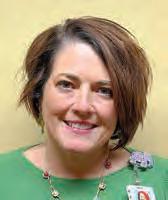

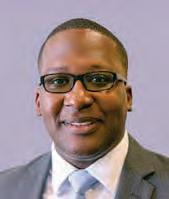

























Who says it’s hard to pick up a new skill or talent late in life?
Nobel Prize winner Toni Morrison wrote her first novel at age 40. Sam Walton founded the first Walmart at 44. Grandma Moses only started painting in her late 70s because it aggravated her arthritis less than quilting.
Since Columbus was founded in 1828, the Chattahoochee Valley, too, has “learned some new
tricks.” Columbus had been around for nearly a century before Fort Moore made it a military town. In the ’70s and ’80s, Synovus and TSYS turned it into a banking and data processing hub. More recently, Columbus has even become a whitewater rafting destination—in the middle of downtown, no less. Now, even with the city’s bicentennial just a few years away, Columbus is trying its hand at another new pursuit: microchip manufacturing.
Turning the Chattahoochee Valley into another Silicon Valley might seem like a big leap even for this multi talented area, but a consortium of government, business, nonprofit, education and philanthropic leaders think otherwise. Their unprecedented collaboration— an effort dubbed the Chattahoochee Hub for Innovation and Production of Semiconductors, or CHIPS4CHIPS—has put the region in the running for a federal government grant of nearly $50 million.
What have I gotten myself into? Ben Moser thought to himself.
It was the spring of 2022, and Moser, president of the United Way of the Chattahoochee Valley (UWCV), had been meeting with members of the Columbus 2025 committee about poverty reduction. In early discussions before the COVID pandemic hit, the committee had discarded its original goal of a 10-percent reduction in poverty over 10 years in favor of a much more ambitious 50-percent cut. Now that COVID was receding, it was time to focus on poverty again, and they needed someone to lead the charge.
Moser agreed that UWCV would be an ideal place to headquarter such an effort, and he signed on as its leader. But once fundraising got underway, he started getting nervous. “I’d just signed on to a 50-percent poverty reduction over a 10-year period,” he recalls. “It’s never been done—certainly not in the Southeast in an


area of our size—and I knew that nothing we currently had going here was going to take us anywhere close to that. We were going to need to make a dynamic shift in the way systems work here, and it wasn’t just going to be about service delivery… I knew it had to be something different.”
A summer intern, of all people, helped guide him to the answer. Moser tasked BJ Tillman, a UNC-Chapel Hill student who had worked with UWCV on earlier projects, to research every major povertyreduction initiative worldwide over the last 20 years and find out what worked. When Tillman submitted her report at the end of the summer, the answer was clear: The only thing guaranteed to make a meaningful dent in poverty was jobs, the higher-paid the better.
The good news was Moser now had a strategy. The bad news was, as he puts it, that strategy was “not really in the United Way’s lane.” The United Way provided services to aid people in dire economic straits—treating the symptoms of poverty, Moser explains—but now they were tasked with a treatment plan aimed at the disease itself.
Then on August 11, Moser got an e-mail from Sen. Raphael Warnock announcing the passage of the CHIPS and Science Act, a comprehensive technological innovation bill that included more than $50 billion to spur domestic research and manufacturing of semiconductors. “This is economic development,” Moser remembers thinking. “This is job creation.
This is how you’re going to get a 50-percent poverty reduction.”
Moser started talking to people—elected officials, nonprofit leaders, the United Way’s own donors—about the idea. “I was expecting them to say, ‘That’s crazy’… [but] none of that happened. Every one of the folks I talked to said, ‘That’s extremely interesting, I think you should explore this more, this sounds like just what we need.’” And CHIPS4CHIPS was born.
Semiconductor chips are an inescapable part of modern life. They’re in your computers and phones, of course, but these days they’re also in your cars, your household appliances, even your toaster oven. If it’s a “smart” device, if it has so much as an LCD display, it needs semiconductors to work.
Once upon a time, the United States produced tons of them. In the late 1980s, though, Taiwan mounted a concerted effort to become a global hub for chip production—and it worked. According to the Council on Foreign Relations, Taiwan now produces about 70 percent of the world’s semiconductors, and around 90 percent of the advanced chips used in AI and quantum computing.
But COVID, and the supply-chain nightmares it created, laid bare the dangers of having so much of this critical industry centered in one small country. Not only that, the People’s Republic of China still
considers Taiwan part of its territory. Were the Chinese to make a move to reclaim Taiwan, it would cripple not only the US economy but our national security apparatus as well.
The CHIPS and Science Act represents the federal government’s efforts to get ahead of such a catastrophe and make the United States fertile ground for semiconductor fabrication plants, or “fabs.” And Columbus Marketing Executive Marquette McKnight says the Chattahoochee Valley area is tailor-made for a fab.
“They use a lot of water, but we’ve got incredible water flow on the Chattahoochee River,” says McKnight, whose firm Media, Marketing, and More is heading CHIPS4CHIPS’ publicity efforts. “We’re also in an area that has very little seismic activity—you don’t hear of these plants being situated in an earthquake zone or tornado alley. They want to be close to airports, but they don’t want to be close to the interstate [because]

“BOTH TWO-YEAR AND FOUR-YEAR INSTITUTIONS WILL BENEFIT FROM WHAT WE BELIEVE WILL HAPPEN IN OUR REGION.”
the rumbling of the tractor-trailers can cause vibration.”
The region also boasts a sizable workforce and a hungry one: It was eligible for the CHIPS and Science grants in the first place because its unemployment rate among eligible workers aged 25–54 is higher than the national average. And while semiconductor manufacturing might sound like the kind of field that requires vast technical knowledge and advanced degrees, the reality is much more attainable.
While a cutting-edge extreme ultraviolet lithography machine might cost $300 million, “there’s a training manual for it like anything else,” Moser explains. “The person running that is probably going to have an advanced engineering degree, but
there are 50 other people surrounding him on that piece of equipment, and those are high-paying jobs you could be trained on in six to eight weeks.”
How high-paying? As much as $100,000 a year or more—even for workers without four-year college degrees. Here again, the Chattahoochee Valley region has a huge asset, in the form of an educational infrastructure already poised at every level to provide the workforce development training these workers will need.
“Both two-year and four-year institutions will benefit from what we believe will happen in our region,” says Dr. Dionne Rosser-Mims, the vice chancellor of Troy University’s Phenix City campus who is helping to lead the educational part of the CHIPS4CHIPS effort. “The two-year schools are a necessary step along the higher education journey; some individuals will only need a certificate.

Some may need a two-year degree… If you’re specifically wanting to get into the microelectronics field and you want to serve in a high-level position, it may require an engineering degree.”
But the region’s highly regarded K–12 systems have a part to play as well, RosserMims says. “We can’t just focus on the adult population—elementary, pre-K through 12th grade, we’ve got to shore that up, [and] that’s happening in the school systems. There has to be a connection point between the youth and the adults.”
Despite a rapidly changing educational environment in which many academics can feel pressured to compete rather than collaborate, Rosser-Mims says she’s been delighted by the way the leaders of the
region’s educational institutions—from K–12 schools, to two-year colleges such as Chattahoochee Valley Community College and Columbus Tech, to four-year institutions such as Columbus State, Troy, Auburn, Tuskegee and beyond—have been pulling in the same direction on CHIPS4CHIPS.
“This is really in our wheelhouse to make our programs accessible and communicate a message that suggests yes, our doors are open, you can do it,” she says. “We’ve got our work cut out at each of the institutions, but we’ve got the right leadership at the right time, and the faculty who’ve been involved up to this point, they are very, very passionate about this industry and they want to lean in.”
“...IT’S ONE GIGANTIC CONFIRMATION THAT THE REGION AND ITS LEADERS HAVE IDENTIFIED WHAT THE FUTURE IS AND ARE MAKING EFFORTS TO GET US POSTURED FOR WHAT THAT ENVIRONMENT WILL BE FIVE, 10, 25 YEARS DOWN THE ROAD.”

Even for a region that historically has been quick to unite behind community and philanthropic efforts, the degree of collaboration behind CHIPS4CHIPS has been remarkable, says Andy Hilmes, a retired brigadier general in the Army who

now serves as UWCV’s executive vice president for economic development and a CHIPS4CHIPS co-lead.
“We have a truly unique community,” Hilmes says. “We straddle a state border, but… we’re one community, it’s just that some of us live in Alabama and some of us live in Georgia. Seeing governmental bodies, city leaders form multiple cities, college, university presidents, K–12 superintendents, nonprofit leaders, business owners large and small, leaders of major corporations, all sign onto this thing… it’s one gigantic confirmation that the region and its leaders have identified what the future is and are making efforts to get us postured for what that environment will be five, 10, 25 years down the road.”
So where do things stand with CHIPS4CHIPS right now? It’s already passed one hurdle—last December, the Chattahoochee Valley region was selected for a $500,000 grant from phase one of the federal government’s “Recompete” program. McKnight remembers that they got the phone call from Sen. Jon Ossoff at a Christmas party that the CHIPS4CHIPS executive committee was attending.
“He told us that they had had 650 applications nationwide, and we were one of 22 finalists. We were drinking champagne, we were toasting, we were just over the moon about it,” she says with a laugh. “And I said, ‘Holy moly, if they’re going to announce this tomorrow nationally from DC at the Department of Commerce, I’ve got to get up in the morning and send out a news release!’”
Columbus is now in the finals for phase 2 of Recompete for future funding rounds that Moser says would be spent primarily on workforce development programs at educational institutions


throughout the region. Moser projects that even if Columbus isn’t the first community selected, it could still be in line for major funding down the road.
In the meantime, the CHIPS4CHIPS push is already making a tangible impact. Earlier this year, Congress allocated just over $1.5 million to the Chattahoochee Valley to develop a “megasite” north of Columbus. Several area colleges and universities have collaborated on a summer “CHIPS Camp” to get middle and high school students excited about the possibilities of careers in the technological fields. According to Rosser-Mims, that type of cooperation among educational institutions will strengthen their candidacy for a variety of federal grants for years to come.
And if the phase two grant comes through, Moser says, it could reshape the entire Chattahoochee Valley. For families that have been mired in poverty for generations, receiving assistance that just helps them survive, they could find career paths that offer long-term stability and, after years of hopelessness, a whole new

outlook on the future.
“There are lots of ways to put it, but it is providing opportunity where there did not exist opportunity before,” he says. “And that is a shift for that person, for that family, that in terms of dollars and cents you could be talking about millions of dollars just for one individual… It’s been the most rewarding effort of my entire career, and I think it’s going to transform the region.” C








BY ALAP SHAH

Change is coming to the Valley with TEDx. Since the dawn of humanity, we have understood our world through stories. These stories shared around campfires and across generations have shaped our reality and connected us deeply to one another. It is this powerful tradition of storytelling that we seek to continue and celebrate in the Chattahoochee Valley with TEDx.
TEDx is an independently organized event under the broader TED umbrella, which stands for Technology, Entertainment and Design. TEDx events are local gatherings where live talks and performances are shared with the community, following the format and spirit of the global TED conferences. The goal is simple yet profound: to spread ideas that are worth sharing.
These spaces are where ideas can be freely exchanged, where diverse voices can be heard and where we can find inspiration and understanding in a time that often feels uncertain and divided. TEDx provides such a platform, offering a stage for innovative thinkers, storytellers and visionaries from our community to share their insights and experiences.
TEDx has been a guiding light during difficult times ,and I have turned to TEDx talks for wisdom, motivation and a sense of connection when it was needed most.
The beauty of TEDx lies in its vast array of topics; you can find talks on just about anything you can imagine. Whether it’s science, art, personal growth, technology or social issues, there’s a talk that speaks to each and every one of us.
By bringing TEDx to Columbus, this creates an opportunity for our community to come together, to learn from one another and to grow together. It’s a chance for the community to share their own stories, to inspire and be inspired, and to build a stronger, more connected community.
So, why TEDx Bibb City? Why not TEDx Columbus?
TEDx Columbus is the goal. In order for TEDx Columbus to happen, we will host 3-4 smaller TEDx events with different names for places in our community. While they are named for certain areas or features of the Chattahoochee Valley, this does not mean we have to have the talks focused on or located in that specific area. While planning and looking for locations, we met with W.C. Bradley Real Estate President Pace Halter who graciously wanted to partner to host this first TEDx. We are very thankful for W.C. Bradley Real Estate’s partnership and believe in our vision of what TEDx can be for Columbus.
The first TEDx Bibb City will be held on Thursday, November 21 at the PowerHouse Event center. The doors will open at 6 p.m. for the pre-event functions and the first talk will begin at 7 p.m.. There will only be 100 tickets sold to be in the room for TEDx Bibb City. This is a limit that TEDx puts on the first events. Because in person tickets are limited, there will be separate tickets for those who want to watch it live streamed at the venue.
As for the speakers for TEDx Bibb City, here is a great place for our community
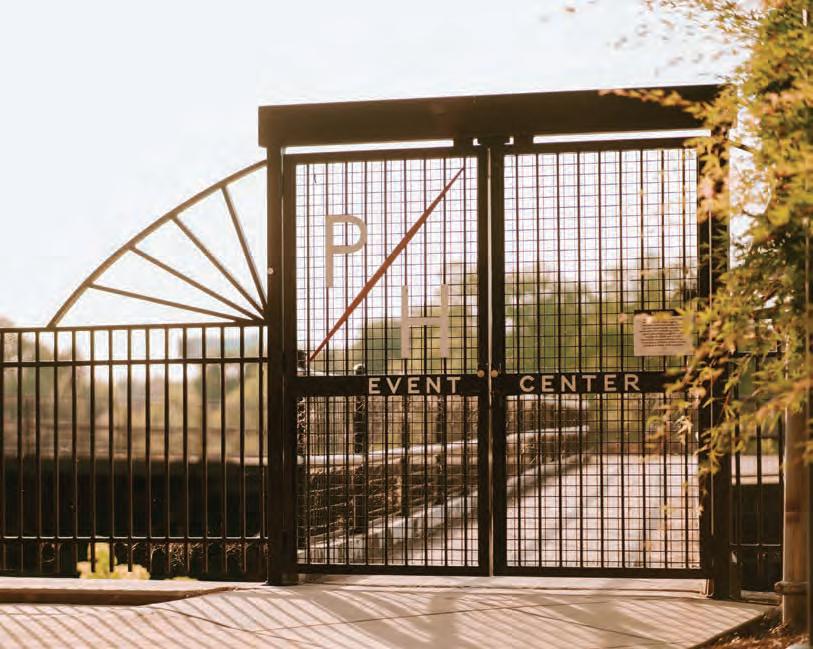
to be involved. The organizers will be selecting a few amazing speakers from right here in our area. You can apply on the website to be considered.
For more information, follow TEDx Bibb City on Facebook, Instagram and LinkedIn as there are daily posts. You can also visit tedxbibbcity.com for links to
volunteer to help with the event or apply to be a speaker.
Local businesses can also partner with the event to continue the journey toward TEDx Columbus. Businesses can email info@tedxbibbcity.com.
Let’s embrace this chance to share, learn and grow together with TEDx. C


BY BRETT BUCKNER
Brookstone School is the only school in the world to offer a corporate-based leadership program to its students
At Brookstone School, service and leadership are the guiding principles that define not only its curriculum but its culture. It begins in preschool where faculty and staff develop students with a heart for service, and a desire to help others.
Servant Leadership is the first step in that journey.
But it’s not a class or club for a select few. Servant Leadership is a community outreach program for every student, faculty member and family at Brookstone, said Meghan Blackmon Director of Servant Leadership and The Blanchard Leadership Institute at Brookstone School.
“[It] is central to the entire Brookstone experience,” Blackmon said, “and is firmly integrated into the culture of our school … as we prepare our students for life beyond Brookstone.”
Servant Leadership is the first step of a more profound journey that teaches students how to expand their perspectives, break through limitations and foster self-awareness.
And Brookstone is the only school offering it.
The Blanchard Leadership Institute (BLI) was established through a partnership with The Developmental Edge (TDE). TDE’s CEO Andy Fleming and team built on the work of TDE’s Chief Knowledge Officers, Dr. Robert Kegan and Dr. Lisa Laney, to create The Developmental Sprint, which has become the foundation of the Blanchard Leadership Institute.
The Developmental Sprint, is a process based in human development research and combines workshops, peer coaching and real-time experiments. It focuses

on helping participants identify and overcome assumptions to help them achieve traction on an improvement goal. This work is navigated alongside others working towards their own progress, building a team-like camaraderie.
In 2019, the Brookstone administrative team participated in its first Developmental Sprint.
“It was such an impactful experience for everyone involved,” Blackmon said. “A few people remarked how incredible it would be for students to be equipped with these tools for ‘thinking about their thinking’ and overturning limiting assumptions that are preventing them from making forward progress.”
Partners at TDE agreed that Developmental Sprints, created for the corporate business environment, could work within schools as well.
The following year, Brookstone partnered with TDE to launch age-appropriate sprints for students in grades K-12, making Brookstone the first school in the country to do so.
The process allows for low stakes, safe

and immediate opportunities to take action and develop an understanding of flawed thinking that may have worked against what students were trying to achieve, explained Bonnie Smith, Assistant Head of the school, Learning Center Director and Developmental Sprint Leader.
“It’s not magic,” she said. “It’s a very intentional and informed use of psychology and behavioral science that results in thinking and behaving differently. It feels quite simple and obvious when doing the work because of those who spent years designing the framework based on their extensive backgrounds in these sciences.”
Or, as one eighth grade student put it in a comment, “The sprint is like a glow stick—you have to break bad habits and


“The sprint is like a glow stick— you have to break bad habits and mindsets to really shine through.”
– Eighth grade student

mindsets to really shine through.”
Choosing an Improvement Goal is the first part of the process and can include time management, organization, academics, managing emotions, health and wellness or focusing on faith. After choosing their Improvement Goal, students go through a series of steps as part of the Immunity to Change process that is embedded in the Developmental Sprint. Experiments are part of


the work that students take part in once they have identified their limiting Big Assumptions.
An example of a student sprint would include things like spending less time on their phones, initiating conversations with new friends,
showing more interest in siblings or family members, getting started on important tasks earlier, going to bed earlier and spending more time taking care of their health and wellness. Some students challenge themselves to speak


“As individuals grow and develop, they contribute not only to their own success but also to the betterment of their communities and the world at large.”
– Meghan Blackmon
up in a group or class, while others who are really comfortable speaking in front of people aim to develop better listening skills.
“The self-awareness that comes out of these Sprints is beneficial alone,” Smith said, “and the incremental growth is always inspiring.
As Head of the Lower and Intermediate School, Javonne Stewart has served as Developmental Sprint leader for four years. She’s witnessed how these sprints have not only improved students academically, but personally as one. She remembers one Lower School student who overcame her fear of sleeping in her bed alone and another set a goal of meeting new people.
“His assumption was that he would look weird or awkward if he just walked up to someone and introduced himself,” Stewart said. “He found, through his small experiments, that this was not the case. In the end, he was able to meet some new people. Other students have tackled their fear of public speaking.
“There are a wide range of goals and experiments.”
The goal of a sprint isn’t necessarily to realize gains on the one goal but to learn a process that can be repeated and used over a lifetime.
“We want students’ thinking,” Smith said. “[We want] their process for approaching growth to develop in ways that improve their productivity, their ability to relate to others and their ability to experience success at an accelerated rate.”
Over the past few years, Brookstone has adjusted how it initially offered sprints so that students will continue to grow and develop.
“We are considering other updates to the frequency of the Developmental Sprints for the upcoming school year,” Blackmon said. “We are looking to expand the Blanchard Leadership Institute beyond just the Developmental Sprint.”
Developmental Sprints are not strictly for students and faculty. It is also available
to Brookstone parents, alumni, faculty and friends every spring and fall semester as well as during the summer.
Leigh Anne Floyd, who works in Servant Leadership, participated in the first sprint held on campus, before the students were involved. These sprints, as well as the second and third she completed, centered on her professional life—such as time management, prioritizing and learning to say no. Her fourth sprint involved people outside of the Brookstone community. It was more of a personal sprint than a profession, focusing on finding a way to incorporate exercise into her daily routine.
Aside from personal and professional improvement, Floyd participated in the sprints because of the engagement with a peer group. It was a way of getting to know Brookstone teachers and administrators on a professional level while getting to know other teachers and administrators on a personal level.
“This small and intimate grouping allowed us to have thought-provoking and sometimes emotional conversations involving both professional and personal growth,” she said. “There have been some meaningful moments I’ve had in these groups that would have never happened outside this peer group setting, and for that I am forever grateful.
“The level of trust between my colleagues in these peer groups emphasizes that sense of family that Brookstone does so well.”
For Floyd, the most important benefit of completing a sprint was the long-term

growth mindset.
“We would all like to think that we have a growth mindset, but the daily grind of life tends to get in the way sometimes, and this mindset falls to the wayside,” she said. “The sprint is a gentle reminder that growth is a personal investment and doesn’t have to be done on an island by oneself.”
The BLI and the Developmental Sprint provides an opportunity for students—and the community—to establish a framework that will help them gain an immediate sense of achievement. It also encourages them to challenge their assumptions and understand how to accelerate their own development.
“As individuals grow and develop, they contribute not only to their own success but also to the betterment of their communities and the world at large,” Blackmon said. “Similar to our focus on Servant Leadership and beginning in the earliest grades, we believe it helps establish these practices as healthy habits, thereby becoming second nature to students.” C



BY PAT DANIEL
Why is pinot noir one of the world’s most popular wine varietals? The answer is somewhat complex. Pinot noir originated in the Burgundy region in France around 100 AD. (This varietal predates cabernet sauvignon by over 1000 years.) The name pinot noir comes from two French words for “pine” and “black,” which refer to the pinecone shaped bunches of fruit and the color of the grape.
This grape varietal has been transplanted and grown all over the globe, in almost all of the wine growing regions, except for the hottest. In fact, the grape is best suited to relatively cool climates, where this early ripening fruit is not rushed to maturity. It is, however, famously difficult to grow. This varietal is susceptible to fungal diseases, sensitive to wind, frost, cropping levels and pruning techniques in the vineyard. Unlike cabernet sauvignon, syrah, merlot and grenache, it is intolerant of harsh conditions in the vineyard. Because of these issues, pinot noir has been labeled a “minx of a vine.” The late Andre Tchelitscheff, the legendary maker of some of California’s finest cabernets, once declared that “God made cabernet sauvignon, whereas the devil made pinot noir,” but also declared that if he had to do it all over again, he’d make pinot noir rather than cabernet.
While every wine making region in the world grows and produces wonderful pinot noirs, there are three regions that separate themselves as the “crème de la crème,” burgundy in France, California and Oregon. All three of these regions have very different approaches to this interesting grape.
Burgundy is the region where pinot noir originated in ancient Roman times, and this wine has made the region famous for centuries. These wines are referred to as “French Red Burgundy.” While these wines have flavors of ripe red berries, and sweet black cherries, these wines are lighter in color and flavor than pinot noir from other regions. These wines are elegant, nuanced wines with relatively low alcohol content. Many red Burgundies can age well for 10 to 20 years or beyond, developing more complex flavors over time. The best of these wines are produced in the Côte-d’Or escarpment of Burgundy. One of the most famous wines in the world, Domaine de la Romanée-Conti is from this region. While these wines are exquisite, they can also be quite expensive. The price of these wines is partially responsible for the rise in pinot noir production in other countries.
By volume most pinot noir in the United States is grown in California. In 2023, pinot noir was the third most planted grape varietal in this country behind cabernet sauvignon and chardonnay. For some time, pinot noir wines produced in California have had the reputation of being more fruit forward, darker and jammier, especially when compared to their French counterparts. California’s Central Coast is a notable hub for growing pinot noir, because this area provides this famously finicky grape the environment it needs to thrive. However, more recently, some of these wines from the
cooler parts of the state in Sonoma County such as the Russian River Valley, and Carneros and Chalone have redefined the more southerly portion of the state’s reputation for pinot noir.
The Willamette Valley of Oregon, one of the premier pinot noir producing regions in the United States, is at the same latitude as the Burgundy region of France, and has a similar climate in which the picky pinot noir grapes thrive. The Oregon wine industry grew dramatically throughout the 1980s after winning several second and third prizes compared to French red Burgundies in 1979 and 1980. Pinot noir has put Oregon on the map for winemaking internationally. As with all great wines, the influence of “terrior” (the composition of the soil) is all important. This is especially clear in Oregon, where the best examples mirror the land itself with wild mushroom, brambles, forest floor and


pine flavors. These are characteristics that are sometimes described as “duff.” Other regions of Oregon also produce pinot noir wines, but at a much smaller volume, and many of these wines are bottled without a regional designation.
The arrival of some Burgundian producers in the state and the introduction of women in the winemaking arena has resulted in recent examples of wine from the area that are more elegant and nuanced, much like their French counterparts. One notable example of this development is Lingua Franca winery, with Dominique Lafon as winemaker. Widely respected as one of the top winemakers in Burgundy, Lafon joined the winery in 2015 and is crafting uniquely expressive wines, harnessing the unique terroir of Oregon, in the Burgundian style.
The other area where the pinot noir grape is a superstar of another realm, is in the Champagne region. Here pinot noir is blended with chardonnay and pinot meunier to make exquisite Champagne. When it is produced as Champagne unblended, it is labeled “blanc de noirs,” which means the white from the black. The Champagne appellation of France has more pinot noir planted than any other region in France.
Pinot noir is often considered to be one of the world’s most versatile food wines. The classic pairing for this wonderful wine is grilled salmon. The rich fattiness and light char of the fish could not have a better match than an earthy Oregon pinot noir with its high level of acidity. Also critical to the pairing is the low level of tannin, which thus doesn’t interfere with the lovely flavor of the fish. Other great food pairings for pinot noir include pork and poultry (pinot noir is a perfect complement for the turkey at Thanksgiving dinner,) lamb, wild game, bacon, cheese and fresh herbs. Many lighter versions are lovely as an aperitif without food!
Whatever food you pair this wine with, enjoy its complexity. C
This special section is dedicated to celebrating the vibrant local enterprises that make our community unique. Each of these businesses play a crucial role in shaping our area’s character and economy. By exploring this section, you’ll not only discover exceptional services and products but also support the local entrepreneurs who contribute to our community’s growth and well-being.
By providing diagnostic and rehabilitative audiology, speechlanguage pathology and occupational therapy services, Columbus Speech and Hearing (CSHC) exists to help people with medical communication disorders.
“There are so many physical conditions that affect the way we communicate,” explained Dr. Alice Cellino, CSHC Executive Director. “Difficulty pronouncing words, difficulty finding words, difficulty understanding words, difficulty hearing words…we even address body language communication disorders.
“It’s a big field, and we aim to be the best place in Columbus for patients who need us to receive help.”
CSHC was started in 1978 by Dr. Susie Ford in a tiny office in midtown Columbus. Over the next 40 years, the center grew from a one-woman practice into the Chattahoochee Valley’s leading diagnostic and rehabilitative speech and hearing center. Then, in 2008, it literally became a family business, when Dr. Ford’s daughter, Dr. Cellino joined the practice.
But that’s not the only thing that distinguishes CSHC from other local practices. “I think we are different because we offer a broad variety of services,” Dr. Cellino said. “I’m not aware of other providers
in Columbus who do all the things we do—audiology, speech pathology, reading therapy, vestibular therapy and occupational therapy.
“Many patients have multifaceted communication disorders, and we really strive to help them in multiple areas.
The fact that CHSC is locally run is another source of pride.
“It’s critical that CSHC is locally owned,” Dr. Cellino said. “It is our superpower. We have wonderful relationships with local providers and patients, and we are able to be flexible and nimble if someone has an unusual need. We don’t deal with the red tape that many major chains deal with, so we can be resourceful and responsive.”
In addition to its patients, CSHC helps its local Parkinson’s Support Group. “Every one of my departments is shining in that effort,” Cellino said. “Audiology does a wonderful job of providing diagnostic and rehab services for this population, which often has hearing loss. Speech pathology is providing specialist LSVT Loud Therapy and Swallowing Therapy, which is critical for Parkinson’s patients with very weak voices and Dysphagia. Occupational Therapy provides vestibular rehabilitation care, which is really helping keep this population safely on their feet. “Plus, we host the monthly Parkinson’s Support meeting here in our office.” ADV.
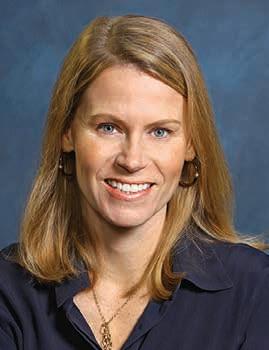
Afourth-grade project inspired Dr. Matthew Stewart to become an orthopaedic surgeon.
“I was given a school assignment to write a biography about a family member,” he said. “I chose my grandfather, an orthopaedic surgeon in Texas, and during the course of the interview I was fascinated by his job. He talked about it so passionately.”
“I remember writing proudly that my grandfather was important because he helped treat children with club feet and pieced people back together with broken bones.”
A funny story that his grandmother later told him involved his grandfather’s time at medical school in the 1940s.
“He was approached by his professors to encourage him to study more,” Dr. Stewart said. “Apparently, he was spending all his time with a local orthopaedic surgeon as his apprentice. So much so that he was neglecting his other school subjects.”
The elder Stewart was eventually brought back in line and was accepted to the prestigious orthopaedic residency in New York City called the Hospital for Special Surgery. It stands to reason that with such a role model, Dr. Stewart didn’t hesitate when choosing a specialty while attending the Medical College of Georgia.
For Dr. Jake Gudger, practicing at the Hughston Clinic is a family legacy. His father was an orthopaedist at Hughston, and as a child, Jake grew up watching him, remembering, “I knew I wanted to follow in his footsteps.”
After graduating from the University of Georgia with a degree in biology, Dr. Gudger went on to earn his medical degree from Mercer University School of Medicine in Savannah. He completed his residency in orthopaedic surgery at the Greenville Hospital System in Greenville, S.C. He returned home and completed an Advanced Clinical Education Fellowship at the Hughston Foundation and has since been working as a general orthopaedic surgeon.
A Brookstone School alumnus, the doctor is proud to be serving his old friends and neighbors. “I enjoy seeing people that I grew up with. Now they are coming to me for treatment and that’s very satisfying,” he said.
It’s not only the reputation of the quality of care that Hughston has developed over the past 75 years, but it is also the reputation of his colleagues that make Dr. Gudger grateful to practice at Hughston. They are renowned throughout the medical community in the fields of orthopaedics and sports medicine.
“There was no other field I ever considered,” he said. “It was always going to be orthopaedics.”
At Hughston Clinic, Dr. Stewart practices general orthopaedics with a special interest in direct anterior hip replacement. His specialties also include foot, ankle, and knee reconstruction, total joint replacements, and sports medicine injuries.

When it comes to treating patients, Dr. Stewart offers a personal touch. “Most patients come to me with a problem that is causing them pain and loss of function,” he said. “I try to put myself in their shoes and understand what’s important to them.”
With a history that dates back 75 years, there are many things that make the Hughston Clinic unique.
“We are very proud of our history, but we also aim to move forward on Dr. Hughston’s original vision,” Dr. Stewart said. “We have now included an orthopaedic residency program, our very own orthopaedic hospital, and expanded our footprint to include more than 30 clinical sites across Georgia, Alabama, Florida and Tennessee.” ADV.
Dr. Gudger also points to the technology available at the Hughston Clinic, saying “Hughston has it all.” They use the latest technology and techniques to treat joint disorders and injuries with innovative, proven, surgical and nonsurgical procedures.

The Clinic’s legacy is in treating sports injuries, and that continues today. Many Hughston physicians cover high school athletes, and Dr. Gudger is no exception, working with Smiths Station and Lamar County high schools. He sees a lot of overuse injuries in student athletes; therefore, he advises that teenagers should not play one single sport all year round. Instead he recommends that athletes play a good mixture of multiple sports, which can help reduce the risk of injury.
Dr. Gudger is well versed in total joint replacement and hip and knee reconstruction. He also treats patients with sports injuries. In addition to the guidance of his colleagues, his operating talent, and the overall excellence of the Hughston Clinic, he attributes his success to a good bedside manner, “I try to make patients feel comfortable,” he humbly admitted. “My philosophy is to listen to the patient and do right by them.” ADV.
At Blue Trust, every client is the most important client. No matter who you are—a multi-millionaire or a middleclass family—Blue Trust approaches all clients with the same mission: applying biblical wisdom and technical expertise to help make wise financial decisions. Blue Trust provides experience, clarity and confidence that will leave a lasting legacy for generations to come.
Colleen F. Jowers, Senior Trust Advisor, said. “Our advisors focus on understanding your ‘Why,’ crafting strategies that reflect your financial aspirations and provide for peace of mind.”
Blue Trust provides services that fit each client’s precise needs including:
• Investment Management: The most important question our financial advisors ask is: What is the purpose for your wealth and when will you need it? We believe appropriate investment allocations are best derived from a clear understanding of when you will need the assets and matching your investments to your time horizons.
• Retirement: It’s a process that clients and their advisor work through together to make sure you find your “financial finish line.”
• Charitable Donations: One of the key benefits of having a comprehensive and strategic financial plan is being able to give generously. Helping clients with their plans for giving has been a central tenet of Blue Trust since its inception.
• Taxes: With all of the tax laws and legislative changes, successfully navigating the tax system is always a challenge. But unlike tax preparation, tax planning is a year-round process, and should be an important part of a client’s financial plan.
• Estate and Trust Planning: Estate planning includes building an estate during a client’s lifetime with the goal of ensuring that the assets are stewarded in a manner that meets their goals, and is passed to beneficiaries in a thoughtful

way. Assisted by a Blue Trust advisor, clients create a strategy for their estate and legacy plan that is designed to empower subsequent generations and reflect their values and principles.
“Our clients are typically looking for guidance in financial planning, investment selection and trust and estate services,” Jowers said, “with an emphasis on making wise financial decisions that align with their personal values and beliefs.”
Before setting up a meeting with a Blue Trust advisor, Jowers suggests clients be aware of the importance of establishing clarity in their financial goals.
“Additionally,” she added, “it’s critical that you ask specific questions to ensure that you receive tailored advice that fits your unique needs.”
“We focus on understanding each client’s unique financial situation and goals, ensuring that the advice and strategies offered are tailored to meet individual needs,” Brandi Hett, Senior Personal Trust Officer, said. “This personalized approach helps demystify wealth management and makes it more accessible to clients who may find it intimidating.”
Advisors at Blue Trust emphasize clarity and transparency in their communication, which is crucial for building trust and confidence with clients
“We aim to create a collaborative environment,” Hett said, “where clients feel comfortable asking questions and expressing their concerns.”
Blue Trust is different from other local, wealth management firms.
“What separates us from others is the 145 years of combined experience in our Columbus office,” she said. “Our expertise, hands-on service and fiduciary responsibility ensure that your financial well-being is our top priority.”
The seed of what became Blue Trust was planted in Atlanta on a hot August day in 1979. Judy and Ron Blue sensed that God wanted them to embark on a new career path. The couple sat down in Farrell’s Ice Cream Shop and considered what they wanted to do with their lives.
Not having any paper, they sketched their personal goals and options on three napkins— Judy wrote one, Ron wrote one and they completed one together.
That same year, while on a trip to Africa, world-renowned author and scholar Howard Hendricks challenged Ron Blue to use his accounting background to help Christians become better stewards of the resources God provided. This challenge, along with encouragement from other individuals, gave Ron the courage to start Blue Trust, which was originally called Christian Financial Management.
Blue Trust established its Columbus office in 2022 initially as an extension of the Family Office Division led by Senior Family Office Advisor, Skip Perkins, who joined the firm in 2013. The office includes Chief Fiduciary Officer Chris Carlson.
Though Blue Trust is relatively new to the Columbus market, its team members are highly credentialed and have vast experience serving trust and wealth management clients.
“We firmly believe that when our clients live with clarity and confidence about money— without conflict, anxiety or fear—their lives are richer and more fulfilling.” ADV.











or casual film fans, the term “genre film” can be confusing. Doesn’t every film fit in some type of genre? Yes, every film can be categorized to some extent. The term “genre film” is most often used to describe films where the genre dominates the narrative, it’s the point of the film, so to speak. It’s most often used to describe horror, martial arts, western, science fiction, crime and action films.
Every summer the Fantasia International Film Festival in Montreal presents the best genre films from around the world. The films have a “handmade” quality, created far away from Hollywood focus groups and box office metrics. Fantasia offers films from every country and culture imaginable. Here are a handful of my favorites
from the 2024 festival that should be coming to theaters and streaming services later this year:
4PM: Lee Jung-in is a college professor embarking on a wellearned sabbatical. He and his wife have purchased a home in the countryside, far away from the hustle and bustle of their city lives. They’re a polite couple and leave a note for their neighbor, a retired doctor, to call on them anytime so they can get acquainted.
The doctor knocks on their door at 4 p.m. the next day, and what follows is the most excruciating, tedious two-hour social encounter that Jung-in and his wife have ever experienced. The couple laugh off the whole awkward incident ... until there’s a knock at their door at 4 p.m. the next afternoon. And the next. And the next.
Over the history of cinema, a film like 4PM would be referred to as a “comedy of manners.” As with most labels, it doesn’t do the film justice. It begins as an absurdist comedy that grows darker and darker as the daily visits begin to feel more like psychological warfare. Maybe 4PM should be referred to as a “thriller of manners?” Don’t sleep on this one.
Brave Citizen: So Si-min is a substitute teacher hoping for a promotion. She learns that her new school is being terrorized by Han Soo-kang, the son of rich, powerful parents who insulate him from the consequences of his criminal actions. When Han pushes some of So Si-min’s students too hard, she decides to push back behind the guise of a masked vigilante. What Han doesn’t know is that So Si-min was a professional boxer before she hung up her gloves and became an educator.
The film feels like a Korean update to The Substitute films of the 1990’s and the later Death Wish sequels where schools and surrounding communities were forced to rise up against their oppressors and fight to take back their homes. The masked vigilante conceit adds an element of superhero culture to the proceedings. I went in with no real expectations, only to discover an action gem.
The G: Ann Hunter (played by character actress extraordinaire Dale Dickey) is an elderly alcoholic living with her sick husband. When a slick businessman forces the couple into a guardianship and assumes control of their finances through a bogus probate court order, Ann rebels. The conman sends his enforcers to crack down on them, and he has no clue what will follow. Ann, known as The G to her granddaughter, comes from a ruthless Dallas crime family, and with a single phone call, she lights a powder keg of violence and revenge. For lovers of gritty crime films, The G is the find of the year so far. C
Scott Phillips is a Columbus resident and serves as the President of the Southeastern Film Critics Association. His reviews and other work can be found at Forbes.com.




BY BRETT BUCKNER
Tibetan Buddhist monks from Drepung Loseling Monastery will construct a Mandala sand painting from September 8 through 14 in the RiverCenter lobby. The opening ceremony begins at 3 p.m. on Sunday, Sept. 8. Every day thereafter, from 10 a.m. to 5:30 p.m. through Saturday, the RiverCenter lobby will be open for people to observe as the monks create the mandala. There will be a closing ceremony around noon on Saturday.

This is a return engagement for the monks who had a five-day residency in 2017 where they built a sand mandala in the RiverCenter auditorium.
“It turned out to be really popular,” Norm Easterbrook, RiverCenter executive director, said. “We felt it was one of those things that if we took a few years off, we could bring them back because the community seemed to respond to it well.
“People were fascinated with it, so we were motivated to bring them back a second time.”
Tantra is an ancient Indian religious movement that seeks enlightenment through a variety of experiences using mental and physical energies. With a teacher for guidance, Tantra practitioners believe one can attain awakening within just one lifetime.
Tantric practices include working with sound through mantra (sacred words), with gestures through mudra (ritualized hand gestures) with sight through visualizations, and mandalas (diagrams of the universe) and with vital energies through meditation and yoga. Of all the artistic traditions within Tantric Buddhism, painting with colored sand is among the most sacred.
Mandala is a Sanskrit word meaning “sacred cosmogram.” In Tibetan, the art is called dultson-kyil-khor, which translates to “mandala of colored powders.”

“By implementing this vision, Drepung Loseling monks are preserving the endangered Tibetan culture, which currently leads a fragile existence in the exiled refugee communities in India and Nepal.”
As with the sand paintings tradition, mandalas have their roots in the Tantric legacy of Buddhist India, reaching back more than 2,500 years. Mandalas are used as tools for reconsecrating the earth and healing its inhabitants. They are formed of geometric shapes and ancient spiritual symbols.
“Mandalas are created for the healing of living beings and the environment,” according to the Drepung Loseling Monastery website. “They are also created as a meditation tool to become one with the universe.”
“The entire process is remarkable,” Easterbrook said. “The skills required to lay these grains of sand so that they make a cohesive design that is fascinating and kind of hypnotic to watch,” he said. “The tools that they use to do that make a unique kind of a scraping sound that is soothing. And it’s breathtaking to see them go from a line that’s the width of one grain of sand and then expands out to a much larger area of the same color.”
Beyond the artistry and the skill, the
mandala has a sacred meaning. After it’s completed, the mandala is deconstructed to symbolize the impermanence of all that exists. Some tiny glass vials are filled with the sand and available for purchase, allowing them to partner with the mandala’s meaning.
“People watch the mandala’s creation whether it’s for healing or peace,” Easterbrook said. “This allows them to reflect on that and by keeping some of the sand, they also retain some of those feeling. So, it’s tactile in a way.”
Proceeds from the sale of those vials benefit the Atlanta-based Drepung Loseling Monastary which is dedicated to the study and preservation of the Tibetan Buddhist tradition of wisdom and compassion.
“As a center for the cultivation of heart and intellect, it provides a sanctuary for the nurturance of inner peace and kindness, community understanding and global healing,” according to the Drepung Loseling website. “By implementing this vision, Drepung Loseling monks are
preserving the endangered Tibetan culture, which currently leads a fragile existence in the exiled refugee communities in India and Nepal.”
The closing ceremony is at 12:30 p.m. on Sept. 14, during which the monks will lead a procession to the Chattahoochee River. The remaining colored sand will be poured into the river, allowing the waters to carry the healing energies of the mandala throughout the world.
Though such an event might seem unusual for the RiverCenter, its uniqueness is precisely the goal.
“It’s a function of the arts for us to frame our experiences differently,” Easterbrook said. “It’s about taking the opportunity to think about others, to look at things differently and just taking a moment, a respite from the daily grind, to sit and reflect on something of beauty, something that is sacred to the people creating it.”
These events are free and open to the public during regular lobby hours. The event will also be live-streamed on the RiverCenter’s Facebook page. C



Lung cancer is the second most common non-skin cancer diagnosed in both men and women—and it is the deadliest. The American Cancer Society’s (ACS) 2024 report estimates more than 125,000 people will die from lung cancer in 2024, making the disease by far the leading cause of cancer death in the United States.
In Georgia, ACS statistics show that lung cancer rates are significantly higher than the national average: an estimated 7,350 Georgians will be diagnosed with the disease this year. For City of Hope® Cancer Center Atlanta oncology experts Shady Eldaif, M.D., director of Thoracic Oncology; and Jason Budde, M.D., thoracic surgeon, the main reasons for Georgia’s elevated lung cancer cases are clear: smoking habits and, to a lesser extent, radon exposure.
“Because there’s not a significant genetic predisposition, like with breast cancer or certain types of colon cancer, risk primarily hinges on smoking habits and history,” Dr. Eldaif says. “Radon content in the South tends to be higher, and that also contributes to lung cancer.”
Smoking is the leading cause of lung cancer, but radon exposure is the biggest risk factor for never-smokers, according to the U.S. Environmental Protection Agency. People are exposed to radon — a colorless, odorless radioactive gas that forms when metals in rocks and soil break down — when it seeps through cracks and gaps in building foundations, basements and subfloors. Data also shows a rise in lung cancer in individuals who have never smoked or been exposed to radon, though the cause is still under investigation. Nonetheless, smoking cessation and radon monitoring may help Georgians reduce their risk of lung cancer.
Across multiple statistics related to lung cancer, Georgia consistently struggles. Georgia has higher-than-average smoking rates, at 16%, and according to the American Lung Association’s annual State of Lung Cancer report, Georgia scores below the national average in:
• Screening Rate (only 3.8% at-risk Georgians were screened)
• Early Diagnosis
• Surgical Treatment
• Survival Rate (overall, and significantly lower based on racial and ethnic disparities)
“Early-stage lung cancer patients almost never experience symptoms. When high-risk patients wait until symptoms occur to undergo testing, about twothirds of those patients are then diagnosed at an advanced stage,” Dr. Budde explains. Unfortunately, at advanced stages, three-fourths of patients will not be alive in five years. Identifying lung cancer early through screening is the most effective way to increase survival in lung cancer.
Cigarette smoking still accounts for 30% of all cancer deaths across the United States, and as much as 40% in the South. The good news is many current and previous smokers qualify for screening. According to data from the U.S. Preventive Task Force, for patients who receive appropriate screening, lung cancer survival rates increase by 30% to 50%.
In 2023, the guidelines for lung cancer screening received an important update, making it easier for more patients to qualify for screening. Lung cancer screening usually involves a low dose computed tomography (LDCT) scan.
At-risk patients are urged to get screened once a year, and almost all insurance plans and Medicare cover the procedure for those who meet current guidelines.
Annual screening with LDCT is recommended for individuals at average risk who:
• Are between 50 to 80 years in age
• Are a current or former smoker
• Have a 20-plus pack-year* smoking history
“Thankfully, many hospitals and physician offices offer screening services,” says Dr. Eldaif. “It is crucial that we enroll our high-risk patients in a routine screening program to monitor their progress. Patients who believe they qualify should speak with their doctor about getting screened. Early detection is crucial.”
*Twenty pack-years means that the patient either smoked one pack of cigarettes a day for 20 years, or a half pack a day for 40 years, and so on.
According to Dr. Budde, “Innovation means patients have the best chance of cure, the least chance of recurrence and better quality of life after cancer.” Due to remarkable advancements in interventional pulmonology and thoracic surgery, diagnosing lung cancer may require minimal to no invasive procedures. Physicians now use tools such as:
• Lung Nodule Diagnosis: If a CT scan reveals a lung nodule, whether identified during screening, in response to symptoms or found incidentally, a positron emission tomography (PET) scan, minimally invasive biopsy or other testing can aid physicians in diagnosis.
• Artificial Intelligence (AI): AI use is an ensemble approach where human experts and advanced technology work together. Radiologists individually read and interpret thousands of scans, and AI is used in conjunction to analyze scan reports and may help increase nodule detection and precise measurement.
• Future Options: Several new screening methods are in development, including blood tests that look for tumor DNA. While these are not yet approved for routine use, they are available commercially and show a great deal of promise.

Approaches to treating lung cancer have also evolved thanks to advancements in precision medicine. Genomic-informed treatment such as chemotherapy, immunotherapy or other targeted therapy before surgery may be an option for shrinking or curing tumors. Studies also have shown that a segmentectomy, which removes a smaller section of lung tissue, is as effective as the standard procedure, a lobectomy, in taking out the cancer and preventing recurrence while maintaining a better quality of life. In those cases, patients may encounter fewer issues post-surgery and retain more of their breathing capacity.
Researchers continue to search for innovative ways to detect cancer earlier and monitor the effectiveness of current screening guidelines. In the meantime, urging friends, family, colleagues and patients who smoke to undergo a low-dose CT scan screening is the most powerful way to save lives from lung cancer.
City of Hope Atlanta’s comprehensive cancer services include our Lung Cancer Center, which features a Lung Screening Program and Rapid Lung Nodule Diagnosis Program providing radiology results in as little as 24-48 hours. We offer an integrative, person-first cancer treatment approach incorporating leading-edge cancer treatment and supportive care options under one roof. Learn more at www. cityofhope.org/atlanta or call 855-939-HOPE. ADV.
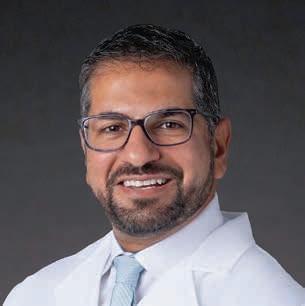

600 Celebrate Life Parkway, Newnan, GA • 855-939-HOPE




The houses on our street are so close that I can read my neighbor’s magazine—at the same time as him. There have been times when three homeowners have been on our respective front porches, all having one conversation with each other.
What I’m saying is, we don’t have a big yard.
When my wife and I started moving toward growing our own food, we started at home. This proved to be particularly challenging with a lot the size of a postage stamp. Even the renowned square foot gardening method (rest in peace, Mel
Bartholomew) is based on a 12-foot square plot of land, which is more than we have in any one spot. And that’s to say nothing of the aesthetics. When you’ve got a tiny bit of dirt, everyone can see it; we were actively trying to add beauty to our neighborhood, a historic cluster of mill houses with plenty of potential but in need of a lot of TLC.
So, how do you create growing spaces that have less of the look of a regular-ol’ raised bed and more of the charm of, say, an English country garden?
For us, we’ve had tremendous success. On a lot that’s 40 feet wide and about 80

feet deep—most of which is house and carport—we’ve been able to plant:
• 8 blueberry bushes
• 5 thornless blackberries
• 5 grape vines
• a fig tree
• a Fuyu persimmon tree
• a cluster of elderberries
• a large herb garden
We used two basic strategies, the first of which is obvious when looking at that list.
It was pretty clear that we would never be able to grow enough tomatoes and peppers to satisfy our appetites just in our yard. And whatever garden space we devoted to that would also be barren for most of the year. So we don’t even try. Most of our home planting spaces are now devoted to fruit trees, which sport lovely foliage for three seasons and colorful fruit for one.
We’re lucky enough to have a tiny farm in town where we can grow our veg. But even if we didn’t, we’d still be doing fruit at home, and not just because fruit trees are prettier than tomato cages.
We’re able to harvest many pounds of fruit from our yard every year. The taste of fresh blueberries or giant, sweet blackberries tossed in our granola and yogurt bowl every morning, well sir, that’s been worth the price of admission.
In terms of maintenance, fruit trees win hands-down. Once established, there’s just a little annual pruning involved, and, depending on how much fruit you want to offer birds, you may have to do some netting when the fruit sets. We were careful to choose drought-tolerant plants, so even watering is almost non-existent. In the interest of full disclosure, I should confess that we should’ve watered our blueberries this year. We lost about half the fruit that turned to mummy-berries in the extreme drought and high temps that smacked us in the early summer. But that’s unusual.

We did have to make some sacrifices. Those blueberries went in a line along our front porch, in place of Encore azaleas that we’d lovingly grown into a hedge from onegallon plants. (A neighbor was grateful to relocate those azaleas to his yard.)
But most of that list found its way into otherwise unused bits of land. The persimmon tree replaced a dead water oak in the front. The blackberry trellis lines the picket fence on our south side. The fig fills a barren corner of our yard. And the herb garden thrives in a former wasteland between our trash bins and the back-alley mailbox.
The last space we filled was the most surprising, and maybe the most successful.
We had a narrow, 40-foot strip of red clay on the shady north side of the house where we thought nothing would grow except green algae. But taking a cue from a neighbor’s arbor, we spent about $500
in lumber and built a 7-foot-tall structure of our own running down that spot. I found a variety of grapes, bred in Texas for hot, humid climates like ours. With no expectation of producing any fruit but the faintest hope of at least getting some greenery on that forlorn space, we sourced five Black Spanish grapes and stuck them in the clay, down the line. I built a little brick path under the trellis and threw river rocks over the rest of it.
Little did we know…
Those plants are aggressive growers, and as someone posted in an online forum, they “thrive on neglect.” The vines sprinted up the posts and made a gorgeous canopy. We pull off enough fruit every year to make a few batches of grape jelly. In more bountiful years, we’ve gathered enough to ferment a gallon of wine.
And looking out the window at the lush grape leaves making the place look lovely, well, that’s something worth toasting. C
Freelance writer Brad Barnes was a journalist for 17 years and a marketing expert for 9 years before he and his wife, Jenn, started Dew Point Farm in MidTown Columbus in 2019. You can email him at info@dewpoint.farm, and he’ll get back to you after he’s washed his hands.



Sunday School every week up until a few years ago


BY DOUG GILLETT
Allegedly, my dad retired eight years ago. I say “allegedly” because that retirement still involves him driving from Pine Mountain down to Piedmont Columbus Regional’s Midtown Campus, about 50 minutes each way, two days a week. Strictly speaking, he’s not seeing patients anymore; rather, he’s teaching residents fresh out of medical school how to see patients. Either way, it’s not my idea of retirement, but I guess I should’ve known better than to think a nearly half-century medical career was going to end just like that.
I mention this not to brag on what a great dude my dad is (though he is), but rather to point out how certain careers can be hard to let go of. It turns out that—in spite of what F. Scott Fitzgerald once said—second acts in American life are quite possible, particularly when you find your career has turned into a calling.
Former President Jimmy Carter, who celebrates his 100th Birthday on October 1, is

a prime example of this, though his calling isn’t what many people would assume of an ex-president. It certainly wasn’t politics—well, not politics as we’ve come to understand it in these cynical and divisive times. Mr. Carter’s true calling was, and is, service to others. And it’s something you don’t have to be president to do.
On the one hand, we might need to grade Jimmy Carter’s post-presidency, as laudable as it’s been, on a curve. That’s because his post-presidency, at 43 years going on 44, is by far the longest of any U.S. president—well over a decade ahead of second-place Herbert Hoover. A person of even marginal skill is eventually going to do something useful if you give them four and a half decades to do it. Then again, plenty of us have lived four and a half decades (or more) and haven’t worn even half the hats Jimmy Carter has, nor worked anywhere near as hard while wearing them. Since walking off of Air Force One for the last time on January



20, 1981, Mr. Carter’s been a teacher, a farmer, a preacher, an author, a homebuilder and a peacemaker. He’s represented the causes of democracy and human rights in every continent on earth (except for Antarctica, though it wouldn’t surprise me), and done such a distinguished job of it that he received a Nobel Peace Prize. He’s written 31 books in a remarkable range of genres—foreign policy analysis, memoirs, social commentary, history, religion, even a children’s book (The Little Baby SnoogleFleejer, co-authored with his daughter Amy).
And that’s all before we even get to his legendary work with Habitat for Humanity. Somewhere somebody has surely kept track of all the homes Jimmy Carter has helped build—not just through his support and advocacy for Habitat, but by rolling up his sleeves and hammering nails himself. I don’t have access to that number but estimating it to be in the thousands wouldn’t be even a little bit presumptuous.
For the record, my lifetime tally in homes built, Nobel Prizes won and books written is zeros across the board. (And I’ve really been trying with that last one.) Clearly, I’ve got a long way to go to catch up—but then again, most of us do.
And the thing is, nobody demanded this of him. Okay, sure, presidents and other world leaders have requested Jimmy Carter’s participation in numerous diplomatic situations over the years. But the original decision to stay active in world affairs rather than slinking back into obscurity, that could’ve gone the other way. After the beating Jimmy Carter took—first as president, then in his doomed campaign to retain the title— nobody could’ve blamed him for just wanting to disappear a little.
Here’s the part where we have to talk about Carter’s political legacy, which remains complicated at best. I won’t leap up in defense of the things he accomplished as president, nor try to excuse away the things he didn’t. I’ll simply observe that for a country founded on the idea that a head of state shouldn’t be an all-powerful autarch, we sure do like to assume presidents control every last thing that happens while they’re in office. But fate and circumstance do have their say, and they seemed to have it in for Carter, who had the misfortune of taking office amidst an economic crisis so confounding it made us add the word “stagflation” to the dictionary, and just as Iranian resentment of American foreign policy, building for a quarter-century, was about to boil over.
And when Carter couldn’t solve it, he found himself wearing the dreaded “one-termer” label after winning 35 million votes in his re-election bid but only six states, the kind of electoral landslide we don’t see much anymore. The country just didn’t seem to want itself any more Jimmy Carter.
But Jimmy Carter thought he still had something to contribute to the world, and simply not being president anymore wasn’t going to keep him from contributing to it.
“A
Carter never actually used the word “malaise” in the nationally televised speech he gave in July of 1979 that has since come to be known as the “Malaise Speech.” It just seemed like an

efficient way of describing the national mood. There are those who suggest it describes our current national mood in a lot of ways—divisions and polarization breeding in some people a nihilistic every-man-for-himself mentality, in others an anxiety that the American experiment itself might have run its course.
Jimmy Carter couldn’t solve that malaise in the 1970s, but that didn’t stop him from working against it for another 40 years. He fought it not with flamboyant public appearances and hellfire condemnations of his enemies, but rather through humble labors, reaching across seemingly unbridgeable chasms and turning enemies into friends. And it turns out he was pretty good at it. In 2009, The Independent observed that “Carter is widely considered a better man than he was a president;” there’s a bit of an ouch to that assessment, but Jimmy Carter might’ve agreed with it. Might’ve even made him smile.
Maybe the runaway success of Carter’s post-presidency bears lessons for all of us. That instead of giving up in frustration and shrinking back from an angry and fractured world, we should get more involved than ever. And that when exhaustively thought-out plans, sweeping gestures and impassioned words fail to move the needle, we should remember that there is still incredible power in small, quiet, subtle acts of kindness—even as small as a hand outstretched to a former enemy.
Or maybe the lesson is simply that when you’ve found a job you love doing, keep doing it, no matter how many people tell you to take a break. Because if it brings others joy, it’s not wasted effort—and if it brings you joy, it’s no longer a job. C


What we loved most about Gerald is that in our first meeting, he took the time to get to know us before discussing our housing needs and wants. We felt like we walked away from that meeting with a new friend, as well as our realtor. He truly listened to our needs and wants when helping us find our home.
Gerald Saunders 706-577-8562


Columbus and the Valley will publish as many photos as quality and space permit. Black and white or color photos may be used. Please identify all subjects with a brief description of the event and the date. Mail them to: CVM, P.O. Box 229, Columbus, GA 31902. Email them to: ContactUs@ColumbusAndTheValley.com, Columbus and the Valley assumes no responsibility for care and return of photographs submitted.


Piedmont Columbus Regional named Sergeant Suli Sene, Corporal Chad Bohannon and Deputy Jeremy Gilmer with the Muscogee County Sheriff’s Office as their First Friday Heroes for the month of July.
Sene, Bohannon and Gilmer were in the middle of working a scene on River Road when a man approached asking them to help an injured person. After arriving at a home nearby, they found an injured woman who was cut from a window and bleeding profusely. Two people had already attempted to apply pressure to her wound without success.
They radioed for EMS and began rendering aid by using towels as the woman’s condition deteriorated. Deputies then located a tourniquet, and successfully applied it to stop the bleeding. The woman was later transported to Piedmont Columbus Regional. She would have likely bled to death had the deputies not been there to assist.
Patricia Billings Ingram was more than 10-year veteran at St. Francis-Emory. She was loved by all her peers and colleagues. Known as “Ms. Pat” to all who knew her, Ingram lost her battle with cancer late in 2023. St. Francis-Emory employees joined Ingram’s family and members of the community at the dedication on what would have been her 65th birthday.



The Columbus State University Alumni Association will begin its new membership year in August with new officers and six new directors on its volunteer board of directors.
Two-time alumnus Lionel Haynes Jr., CDFM ’06, ’07 of Columbus, Georgia, assumes the role of president after previously serving as the association’s vice president. A deputy comptroller with the U.S. Department of Defense, he holds two degrees from Columbus State—a bachelor’s of business administration focused on finance and an MBA. Haynes has served on the board for more than 15 years.
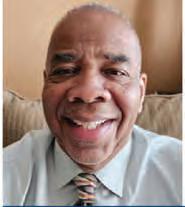





Other association officers will include Michelle McIntire ’94 of Dawsonville, Georgia, vice president; Candice Lawrence ’13 of Covington, Georgia, secretary; and Twilya Toombs ’05 of Cartersville, Georgia, immediate past chair.
NEW BOARD DIRECTORS
Mark Hill ’82 of Suwanee, Georgia, is retired from Piedmont Healthcare, where he worked in information technology for more than 39 years. He holds an associate degree in respiratory therapy and a bachelor’s in health science. As a student, he worked in the Simon Schwob Memorial Library and played intramural basketball. His wife, Sandra, is a 1982 alumna.
Andy Luker ’12 of Columbus, Georgia, returns for his second tenure of service on the board; he previously served two terms from 2015 to 2021. He is the creative director for Columbus-based Media, Marketing…and More! Before completing his bachelor’s of business administration, he was an active member of Kappa Sigma Fraternity and the Student Activities Council.
Chris Miller, CPA ’89 of Midland, Georgia, is a partner in the Audit Department of Columbus-based Robinson, Grimes, & Company, P.C. Certified Public Accountants. He earned a bachelor’s of business administration. His wife, Wendy, is a 1990 alumna.
Stephanie Parrish-Chester, CPA ’10, ’12 of Harrisburg, North Carolina, is a senior manager with EY’s Finance Transformation Consulting and Services team. Before earning a bachelor’s of business administration in accounting and an MBA, she played on the Women’s Soccer team (2007-10). She served as an officer for Delta Sigma Theta, the NAACP CSU Chapter and the CSU Accounting Club, and was active in numerous other campus and academic organizations. She is a 2019 CSU Athletic Hall of Fame inductee, and her husband, Ryan Chester, is a 2010 and 2012 graduate and former Men’s Basketball player.
Gerald Saunders ’03 of Columbus, Georgia, is a licensed realtor with Columbus-based Bickerstaff Parham Real Estate. He earned a master’s in instructional technology.
Tracy Walton-King ’17, ’20, ’23 of Columbus, Georgia, is a business analyst with Elevance Health. She holds three degrees from Columbus State—an associate degree in criminal justice, a bachelor’s in criminal justice, and a master of public administration. As a student, she was active with the Pi Alpha Alpha Honor Society and Phi Sigma Pi Leadership Society, volunteered at Oxbow Meadows Environmental Learning Center and for Tower Day, and received an Alumni Association Scholarship.

The staff of the new Floor & Decor celebrated the grand opening of their first warehouse location in Columbus, at 5555 Whittlesey Boulevard. The warehouse store and design center will open with a team of about 50 full-time and part-time associates led by Jesse Hull, the store Chief Executive Merchant.
Piedmont Columbus Regional Graduates 73 from Nurse, Family Medicine and Pharmacy Residency Programs

The Transition to Practice Nurse Residency Program graduated 51 nurse residents on July 12. “Through learning and clinical experiences with preceptors, ongoing support from experienced educators, mentors and leadership, residents are integrated into a culture that prioritizes and supports their growth,” said Director of Clinical Practice Andrea Wilkins-Howard.

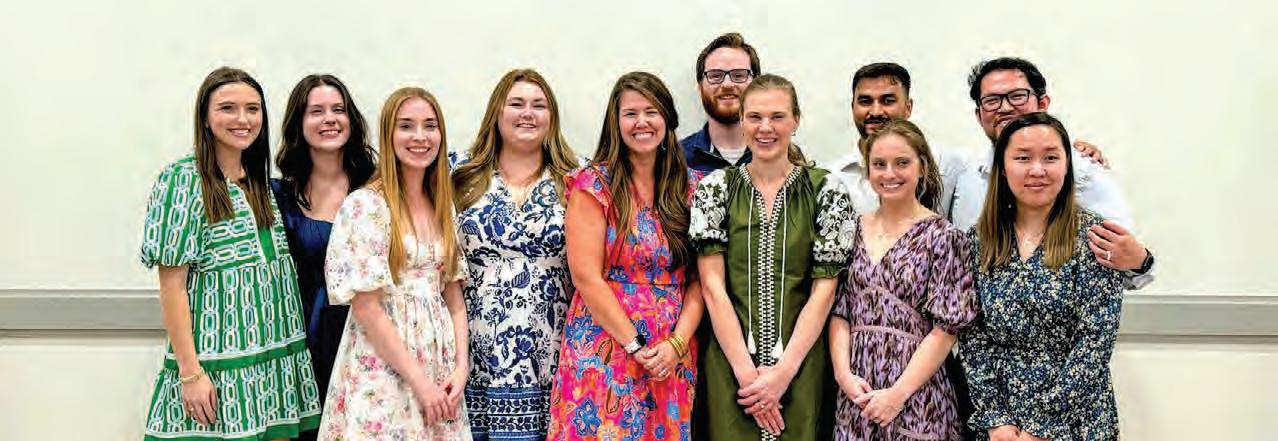
The 1775 Society Gala celebrated their Crystal Anniversary at the National Infantry Museum on August 17. The annual event raises funds for the National Infantry Museum Foundation.

The team celebrated a national semifinal finish on July 27 in Madison, New Jersey. After going 4-3-3 in the regular season, Columbus United FC entered the Gulf Coast Sunshine Conference as the Group B #2 seed. Following a defeat of Tallahassee SC, the team upset their group’s top seed Pensacola FC on their way to winning the conference final, 3-1, over Jacksonville Armada FC. Advancing on to the South Region Playoffs, the team then knocked off Hickory FC 3-2 and West Texas FC 4-3 to clinch their spot in the national playoffs.

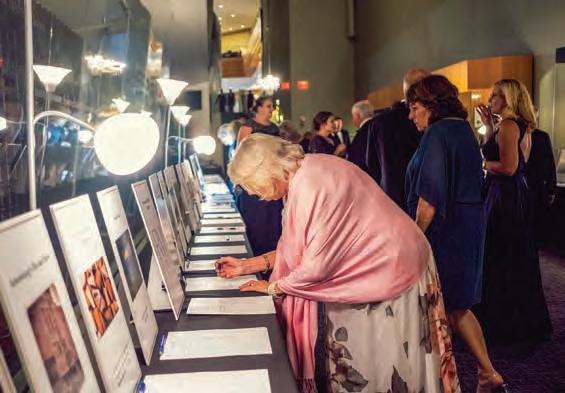
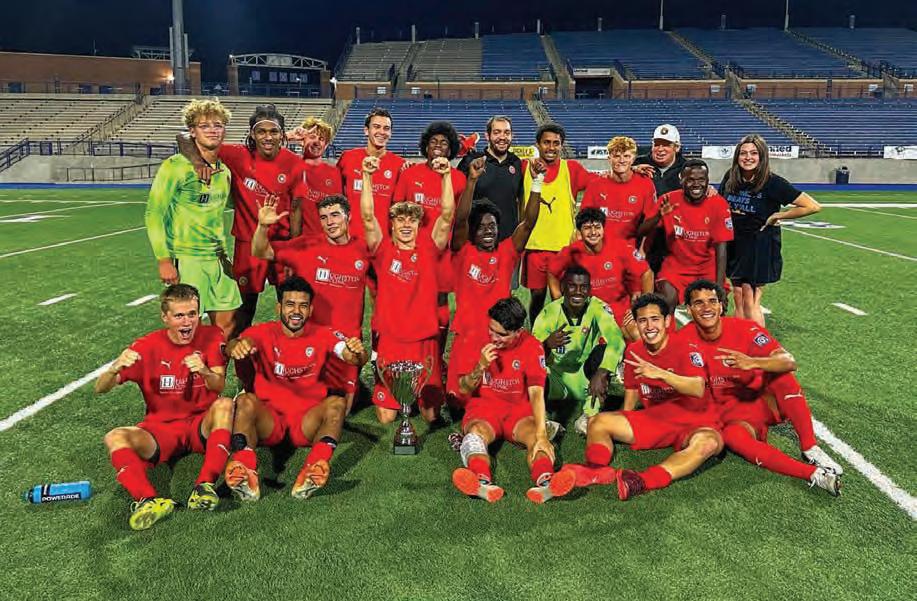

To help lead Columbus State University’s prioritization of student achievement and retention, Dr. Melissa Young has been named the university’s inaugural assistant vice president for student success.
Currently the director of CSU’s advising operations, Young will assume her new role on July 1. In this capacity, she will oversee the university’s primary student success priorities and lead academic advising, career development, First-Year Experience, tutoring and the university’s Quality Enhancement Project, or QEP.
“Dr. Melissa Young has been advancing student success initiatives her whole career at Columbus State, and this new role will allow her to focus entirely on keeping students enrolled, engaged and on track to graduate,” said Dr. Pat McHenry, interim provost & executive vice president. “She is extremely capable, and I am delighted and grateful that she is willing to take on this new position.”
One of Young’s first tasks will be to help implement Columbus State’s “playbook” from the National Institute for Student Success (NISS) at Georgia State University. The report provides a data-based analysis of CSU’s current processes and outlines tools the university can use to better achieve success for all its students.
“From my own higher education journey, my experience and also my research, I understand well the challenges today’s students face,” Young said. “With the preparation that Columbus State has done over the last several months, we are now uniquely positioned to make great strides in retaining our current students and helping them achieve their dreams of a college degree and a successful career.”
Since 2018, she has led or helped lead CSU Advise, the university’s centralized advising office that provides proactive services to more than 4,000 undergraduate students. Her leadership has been instrumental in aligning advising strategies with university goals and initiatives such as Complete College Georgia and the Momentum Approach. She also has served as academic advisor and transfer counselor at CSU.
Prior to joining Columbus State, Young was a program coordinator at Chaminade University of Honolulu and a middle school special education instructor.
She earned her doctorate of education degree in curriculum and leadership in higher education administration from Columbus State in 2021. She also holds a master’s of education and a bachelor of arts in psychology from Chaminade University of Honolulu.

Maj. Gen. Colin P. Tuley assumed command of the U.S. Army Maneuver Center of Excellence and Fort Moore during a ceremony in Marshall Auditorium on post. Tuley brings a wealth of experience and expertise to his new role as the commanding general of the MCoE and senior responsible officer of Fort Moore. Outgoing commanding general, Maj. Gen.
Curtis A. Buzzard—who heads to Europe to serve as an advisor to the U.S. Army Europe and Africa commander while awaiting confirmation for his next assignment—said he will miss the mission and people of the MCoE and Fort Moore the most. “This truly is an amazing place and the best assignment I’ve had in the Army,” Buzzard said.
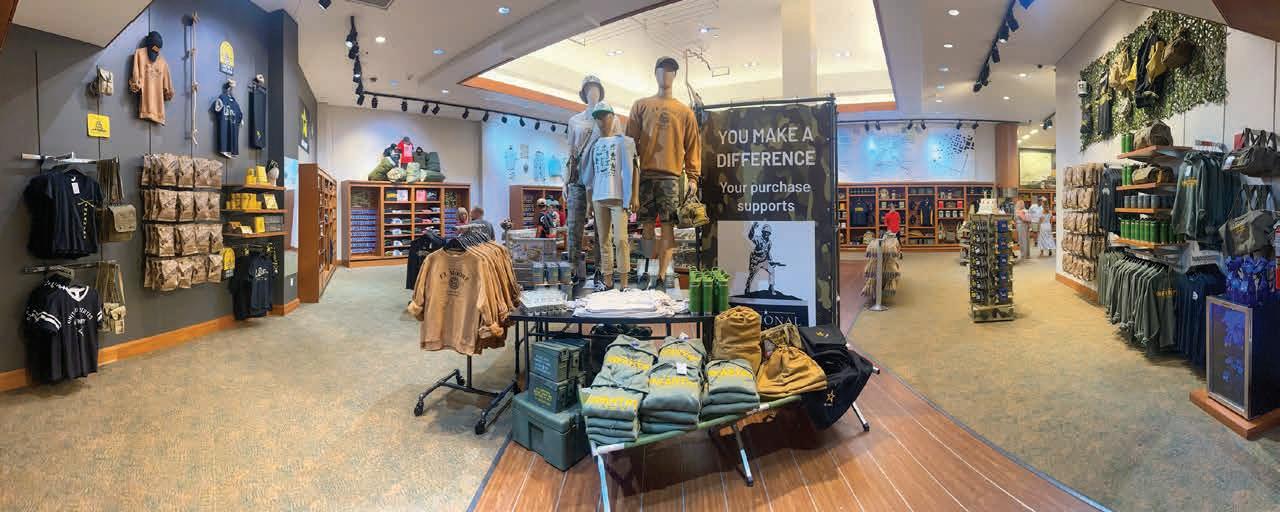


Mayor Skip Henderson was on hand for the ribbon cutting at the renovated Soldier Store at the NIM. Joining him was Alex Summer, Soldier Store Manager; Jeff Jablonski, Event Network Management and Pete Jones, President and CEO of National Infantry Foundation
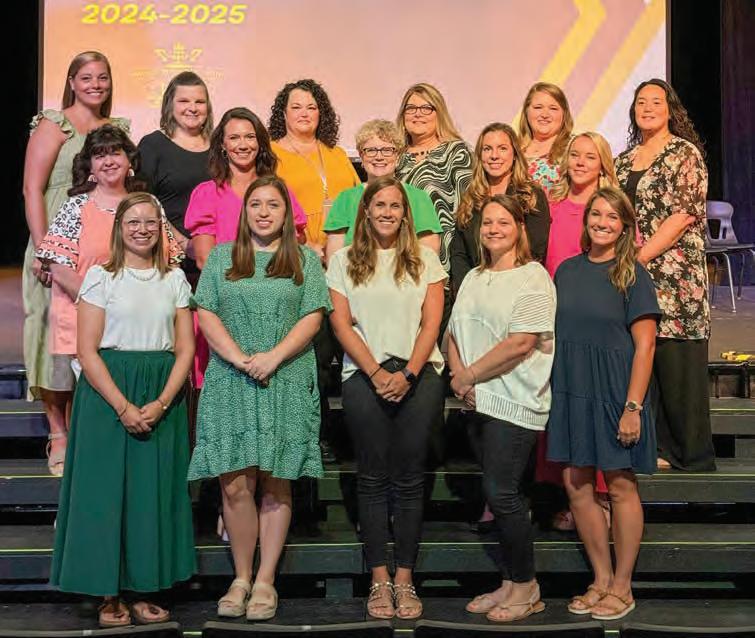
NAI G2 Commercial Real Estate, LLC is pleased to announce their newest partner Lakshmi Karthik who has joined the NAI G2 Commercial ownership team.
At the Back-to-School Kickoff for the Harris County School District (HCSD) on August 2, each school and the central office announced its Teacher of the Year and Support Person of the Year, respectively. The honorees include (Teacher of the Year/Support Person of the Year): Harris County High, Valerie Longshore-Sargent/Mandi Smith; Harris County Carver Middle, Kristi Nelson/Gina Williams; Creekside Intermediate, Jessica Grubbs/Leslie Kinard; Mulberry Creek Elementary, Mallory Osbon/Allison McDaniel; New Mountain Hill Elementary, Amber Bradshaw/Lauren Davenport; Park Elementary, Heather Westad/Heather Coppedge; Pine Ridge Elementary, Abbie Hudson/Julia Higgs; Education Opportunities Center (EOC), Alesha Erickson; Central Office, Tracy Munoz. These honorees will be recognized at the Harris County High School Homecoming football game on September 27 as well as in May at HCSD’s “Evening with the Stars” annual event recognizing faculty and staff.


Bo Bartlett Center
An experiential learning space and cultural hub for the visual arts whose mission is to explore creativity and learning within the context of the work and studio practice of artist and Columbus native Bo Bartlett. Free admission. 921 Front Ave., 706.504.8800, BoBartlettCenter.org
The Columbus Museum
Experience American art, regional history, tranquil gardens, and more. As a destination for people of all interests and ages, COMU has something for everyone—from the art enthusiast to the history buff, the nature lover to the leisure visitor—it’s free and it’s all in one space! Closed Monday. 1327 Wynnton Rd., 706.748.2562, ColumbusMuseum.com
Gallery on 10th
This artist cooperative features over 23 local and regional artists with over 1,000 pieces of original art on display, including the largest collection of Columbus’ Historic Landmark Art. 9 E. 10th St., 706.321.8948, GalleryOn10th.com
National Civil War Naval Museum
Experience the story of the U.S. and Confederate navies during the Civil War. This museum features two original Confederate warships recovered from the Chattahoochee River along with uniforms, weapons, models and art that tell the story of this little known aspect of the American Civil War. Admission: $9 adults, $8 seniors/military, $7 students. 706.327.9798, PortColumbus.org
Priceless artifacts and immersive experiences tell the history of the U.S. Army Infantry in this world-class museum located outside the gates of Fort Moore. Campus includes an authentic World War II Company Street, 3/4-scale replica Vietnam Wall, giant screen theater, simulator attractions and fullservice restaurant. Closed Monday. $5 per person donation requested. 706.685.5800, NationalInfantryMuseum.org

Columbus Botanical Garden
Located on 36 acres of green space in north Columbus, come enjoy four acres of developed gardens with a 10 year plan for new gardens to come. Admission: $10 adults, $5 ages 4-18. Closed Monday. 3603 Weems Rd., 706.327.8400, ColumbusBotanicalGarden.org
Dragonfly Trails
Grab your bike or just yourself to enjoy Columbus's network of off-road greenway trails for recreation, transportation & interaction. There are 34 miles of trail that include the RiverWalk, Fall Line Trace and a 1.4-mile connector. This is an ongoing project. facebook.com/dragonflytrails
Pine Mountain Trail
This 23-mile trail is located in FDR State Park in Harris County. PineMountainTrail.org
Providence Canyon
A popular state park seven miles west of Lumpkin on Ga. Highway 39. Known as the “Little Grand Canyon.” 229.838.6202, GaStateParks.org/ProvidenceCanyon
RushSouth Whitewater Park
Experience fun along the Chattahoochee River in Uptown Columbus/Phenix City. Fun includes crossing the Chattahoochee on the blue heron adventure zip line and ropes course, rafting in a kayak or guided raft on the world’s longest urban whitewater course, frisbee golf, fly fishing, paddleboard yoga, playground with splash pad and so much more for all ages. 706.321.4720, RushSouth.com
Coca-Cola Space Science Center
Features Omnisphere Theater, WestRock Observatory, Challenger Learning Center and Space Shuttle Odyssey Exhibit. 701 Front Ave., 706.649.1470, CCSSC.org

Columbus Historic District
Walking tours available by appointment only. 1440 Second Ave., 706.322.0756, HistoricColumbus.com
Little White House
FDR’s retreat in Warm Springs, Ga. and the only home he ever owned. He died there in 1945. 706.655.5870, GaStateParks.org/ LittleWhiteHouse
Liberty Theatre & Cultural Events Center
Call for events and times. 813 Eighth Ave. 706.225.4915, ColumbusGa.gov/ LibertyTheatre
RiverCenter for the Performing Arts
This state-of-the-art facility includes the 2,000-seat Bill Heard Theatre, the center’s main venue and home to the Columbus Symphony Orchestra. 900 Broadway, 706.256.3612, RiverCenter.org
Riverside Theatre at CSU
The Columbus State University Department of Theatre’s Riverside Theatre Complex houses three state-of-the-art performance spaces for over 75 public theatre performances each year. Corner of 10th St. and Bay Ave., 706.507.8444, ColumbusState.edu/theatre
Springer Opera House
The State Theatre of Georgia is one of America’s most vibrant professional theatre companies with a popular Mainstage Series and an innovative second space series called Studio II. For show dates, see calendar listings. 103 10th St., 706.327.3688, SpringerOperaHouse.org











Big Mama’s is proud to serve you fresh, homemade food made with local ingredients that you are sure to love. Our specialty involves healthy cuisine with plenty of fresh vegetables and a variety of flavorful spices.
Tu-F 11AM-3PM, 5PM-9PM, Sa-Su 11AM-9PM
5300 Sidney Simons Blvd., Unit 14 BigMamaVietnamKitchen.com
Real Barbecue Slow Cooked Over Hickory and Oak. Casual dress, takeout, catering, kids’ menu.
Su-Sa 11AM-10PM Mercury Dr., 706.563.7604
Broadway/14th St., 706.596.8910 Veterans Pkwy., 706.660.1415
FCC's second location located in Bank's Food Hall. Serving up made from scratch baked goods and delicious sandwiches daily in the heart of Columbus.
M-Th 8AM-6PM, F-Su 8AM-8PM 1002 Bay Ave. • 762.524.7774
The combination of a great menu, hand-tossed dough, fresh ingredients and friendly service makes the Mellow Mushroom a must when you have a taste for pizza. Bring your group for a family-friendly dinner or join your friends in our comfortable neighborhood bar.
M-Th 11AM-9PM, F-Sa 11AM-10PM, Su 11AM-9PM. 6100 Veterans Pkwy. • 706.322.4602
A Columbus tradition for families, friends and great food. Ruth Ann’s offers authentic Southern style lunches, and breakfast is served all day.
W-Su 6:30AM-2PM • 940 Veterans Pkwy. • 706.221.2154. Place your next takeout order at ruthannsrestaurant.com.
A local favorite serving great, homemade food and drinks in a comfortable and relaxed atmosphere.
Su-Th 11AM-8 PM, F-Sa 11AM-9 PM 3123 Mercury Drive • 706.561.0411
Uptown Vietnam Cuisine offers authentic, traditional Vietnamese dishes that are both delicious and healthy, featuring fresh ingredients and a variety of flavorful spices. Dine-in, carry-out and party trays are available, as well as a 10 percent military discount.
M-F 10:30AM-3PM & 5-9PM, Sa 11AM-9PM • Closed Sunday. 1250 Broadway • 706.576.9922
Traditional Japanese cuisine with hibachi grill tops and fresh sushi. Come and try our flavorful and fresh ingredients. Su-Th 11AM-9PM, F-Sa 11AM-10PM 1808 Manchester Expy 706.642.0888
Dine in or order online at wasabijapanesecolumbus.kwickmenu.com
To have your restaurant featured here, contact Becky Kenimer at 706.289.8338 or Margie Richardson at 706.575.7825.

